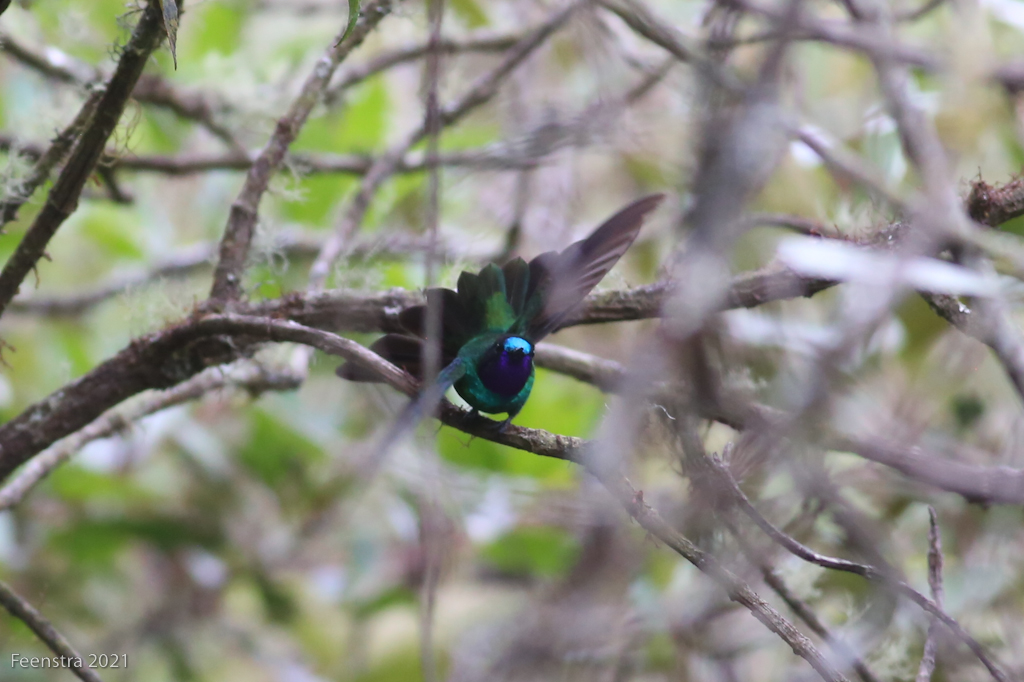
WINGS Tour: Southern Ecuador
The Gang: Dennis, Dotty, Frank, Li, Lisa, Mark, Scott, Jon (Bird Guy), Jorge (El Chofer)
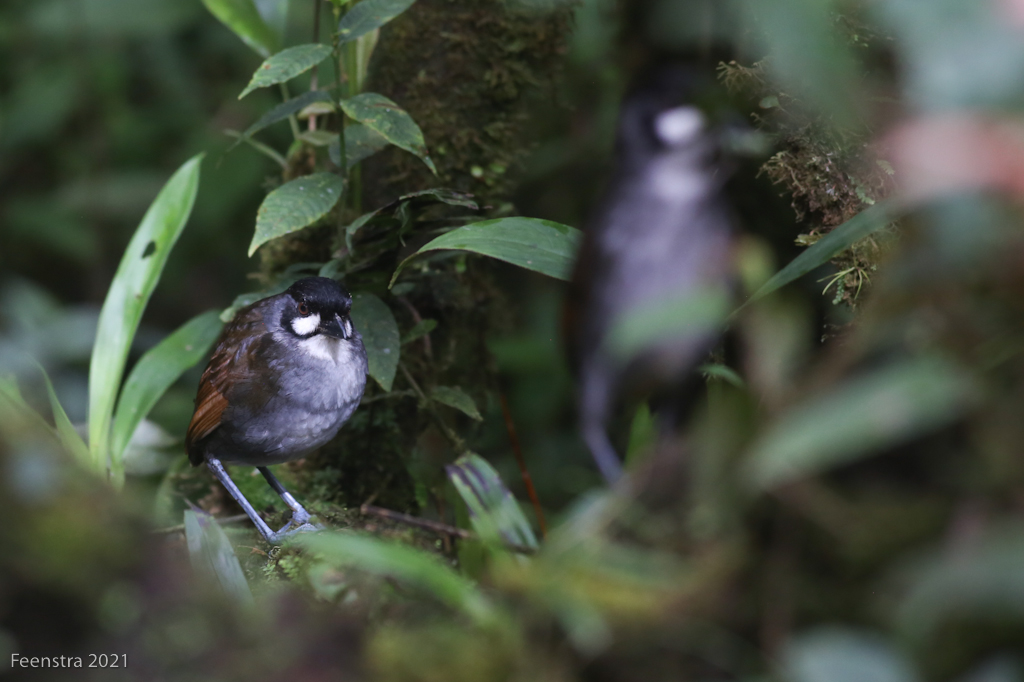
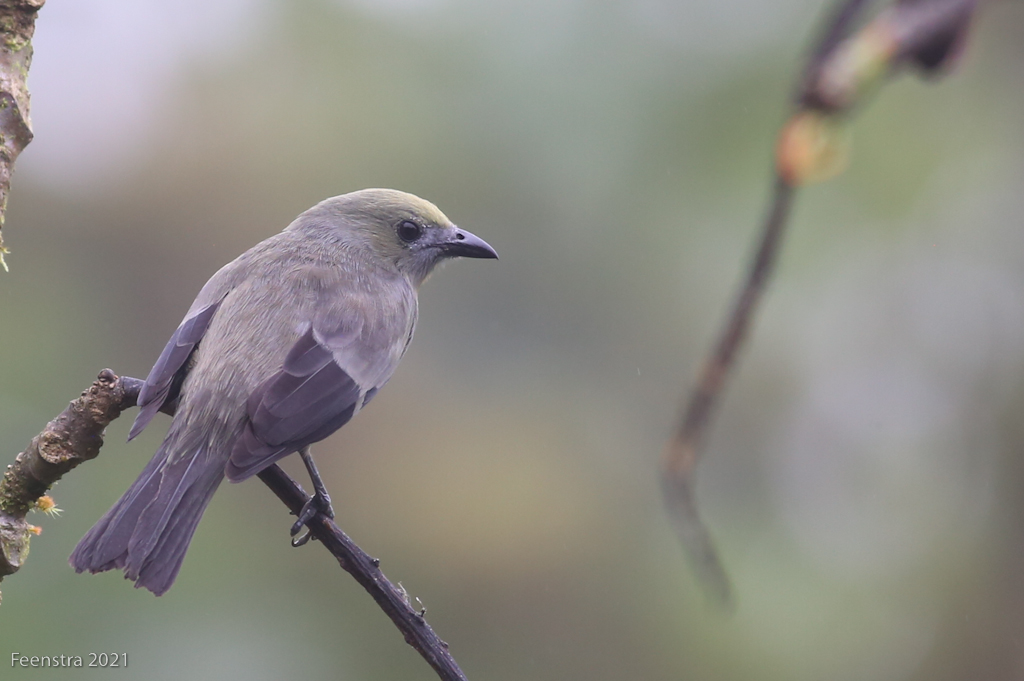
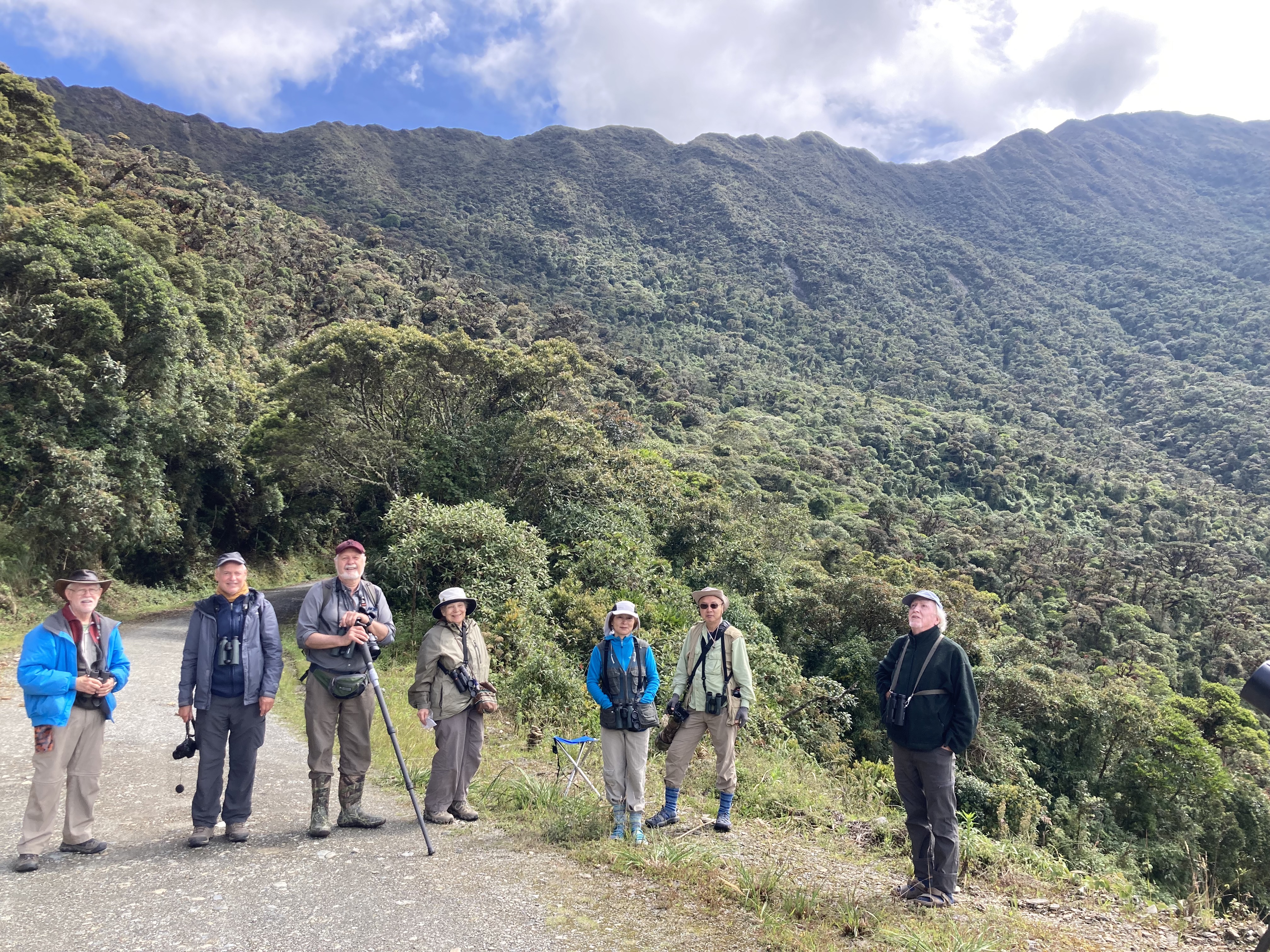

There are birding sprints and birding marathons. Touring Southern Ecuador is a birding marathon. We covered nearly all of the composite habitats from sea level to paramo, both Pacific and Amazonian slopes, desert to rainforest, and everything in between. Consequently, we observed more than 500 bird species, including most of the specialties and endemics and had some great birding experiences. Some singular highlights included Jocotoco Antpitta, basically the flagship species of southern Ecuador. But we also got to spend time with a more subtle cousin, Watkin’s Antpitta. That one was particularly special since we were able to observe it naturally, no tapes, no feeders, just us quiet in the forest with the bird as it went about its business. Our time carefully observing and being part of the scenery also awarded with other specialties like the glowing Orange-throated Tanager of the Cordillera del Condor, and the even more local Blue-throated Hillstar, both species whose looks are comparable to both their rarity and the difficulty of reaching their homes. Those were just a few, and maybe some of the most famous, but everyday, everywhere we went we had great birding, epic scenery, and good times with a amiable group of people.
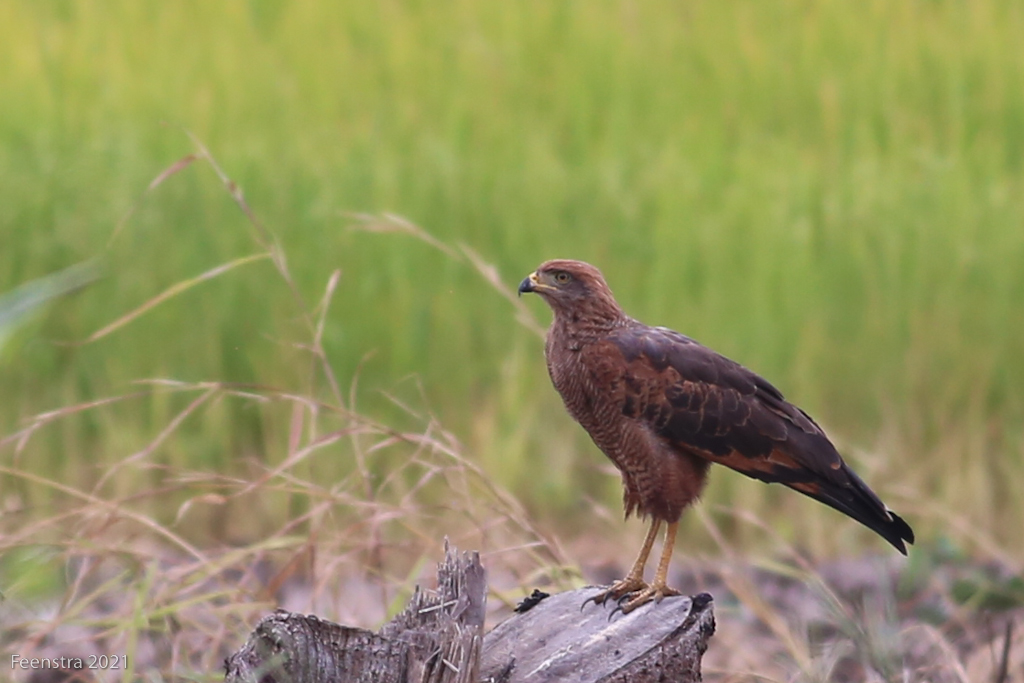
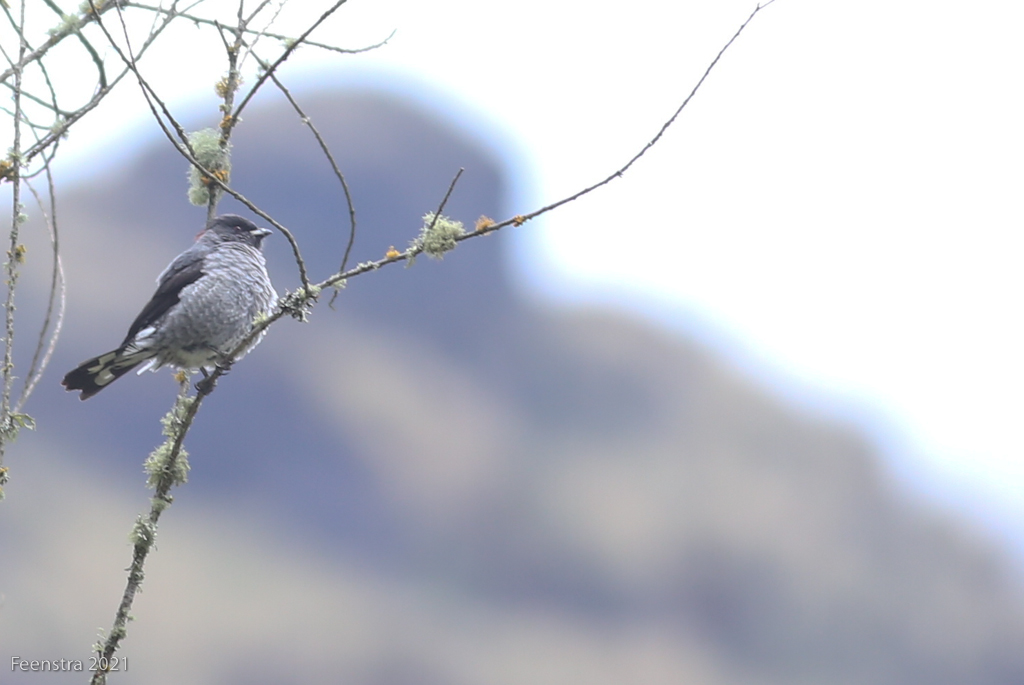
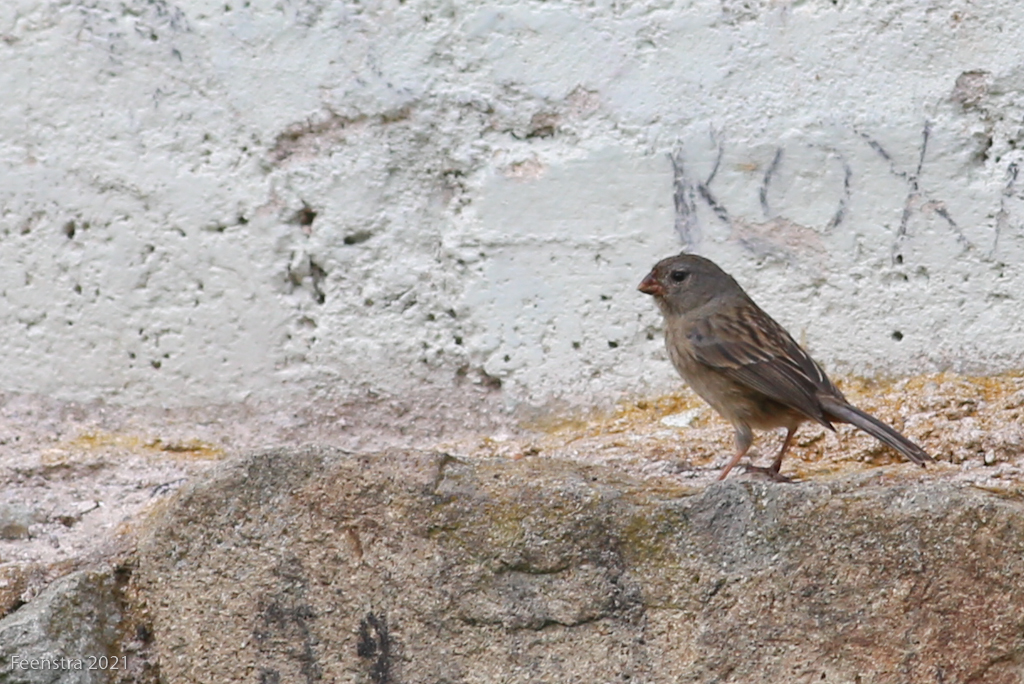
In a trip of extremes, the first day was a prime example. We started at sea level in Guayaquil, making our way just outside to the Cerro Blanco Protected Forest, a wonderful patch of intact dry deciduous forest. Though we didn’t spend nearly enough time enjoying this place, we did get a nice taste of the birds that lived there. A pair of tiny Scarlet-backed Woodpeckers, a Collared Antshrike, and a few Streak-headed Woodcreepers were all typical, yet appreciated birds of this habitat. We also had numbers of Crimson-breasted Finches, a local specialty. From there we went down the road to Lago Chongon. There were water birds like Wattled Jacanas and a few Muscovy Ducks, but we also ran into a few Baird’s Flycatcher that were as pretty as they were big and a severe-looking. Our last lowland birding was on the edge of Manglares-Churute National Park south of Guayaquil. We worked the forest edge along the road and came up with some good stuff like Long-billed Hermit, Orange-crowned Euphonia, and a tiny Fulvous-headed Pygmy-Tyrant. Then it was time to ascend. We went from sea level to above treeline passing through the paramo of El Cajas National Park before arriving at our hotel for the night on the edge of polylepis woodland, 11,000 feet higher than where we started.
In the high elevation forest the adventure continued. We spent most of the day in El Cajas National Park starting in the morning at the lower part (still really high). Some of our first birds were Mountain Velvetbreast, Azara’s Spinetail, and Superciliaried Hemispingus, but a singular highlight was an Equatorial (formerly Rufous) Antpitta near the park entrance. We walked a forested lakeshore, got to see Andean Gulls, Andean Teal, Andean Ducks, and stunning Andean scenery. After that we finished in the afternoon with the higher elevations of the park, above treeline in the paramo. We had a close encounter with a Violet-throated Metaltail, a hummingbird, that, though not showy, is nearly endemic to the park, and therefore pretty special. We also found a pair of Tit-like Dacnises and watched a Chestnut-winged Cinclodes feed a fledgling right in the parking lot. From there, we made our way into the lower, drier Yunguilla Valley for our next adventure. There, tucked away in a little valley is the range of Pale-headed Brushfinch, a bird long thought extinct, but now reliable (eating breadcrumbs of all things) in the Yunguilla Reserve. It was joined by a few Gray-browed Brushfinches, and incredibly, a Chestnut-crowned Antpitta, a gorgeous and shy forest bird, that somehow also likes crumbled stale bread. But our time away from the high paramo was temporary. After our visit to the Yunguilla valley we went back up, this time onto the remote ridge of Cerro de Arcos. This mountaintop is the tiny range of Blue-throated Hillstar, a hummingbird discovered just four years ago. In classic paramo weather of wind, fog, and light rain, we watched a striking male hillstar work the chuquiragua flowers. We spent the night in the lodge up there with displaying Jameson’s Snipe outside in the parking lot.
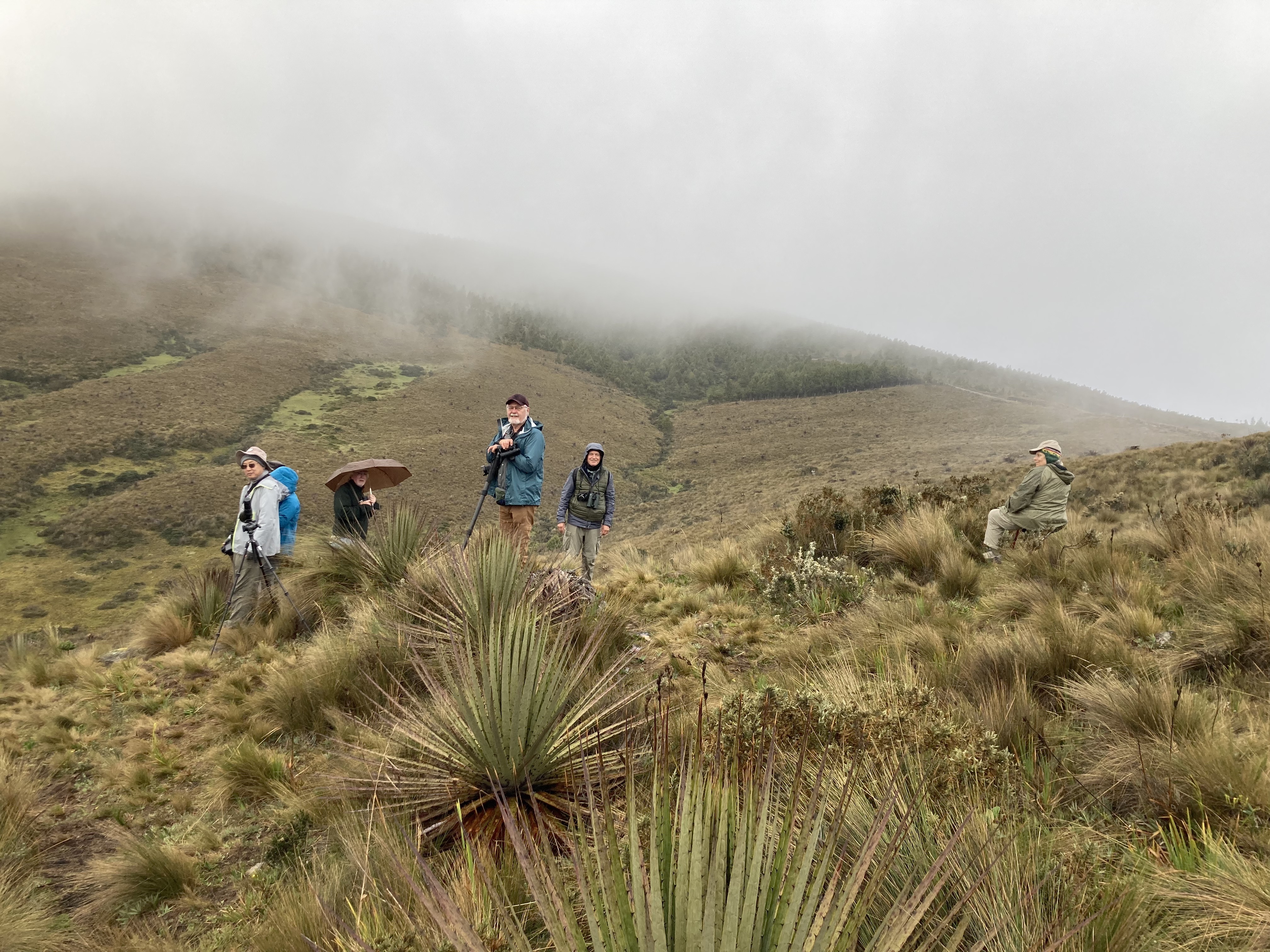
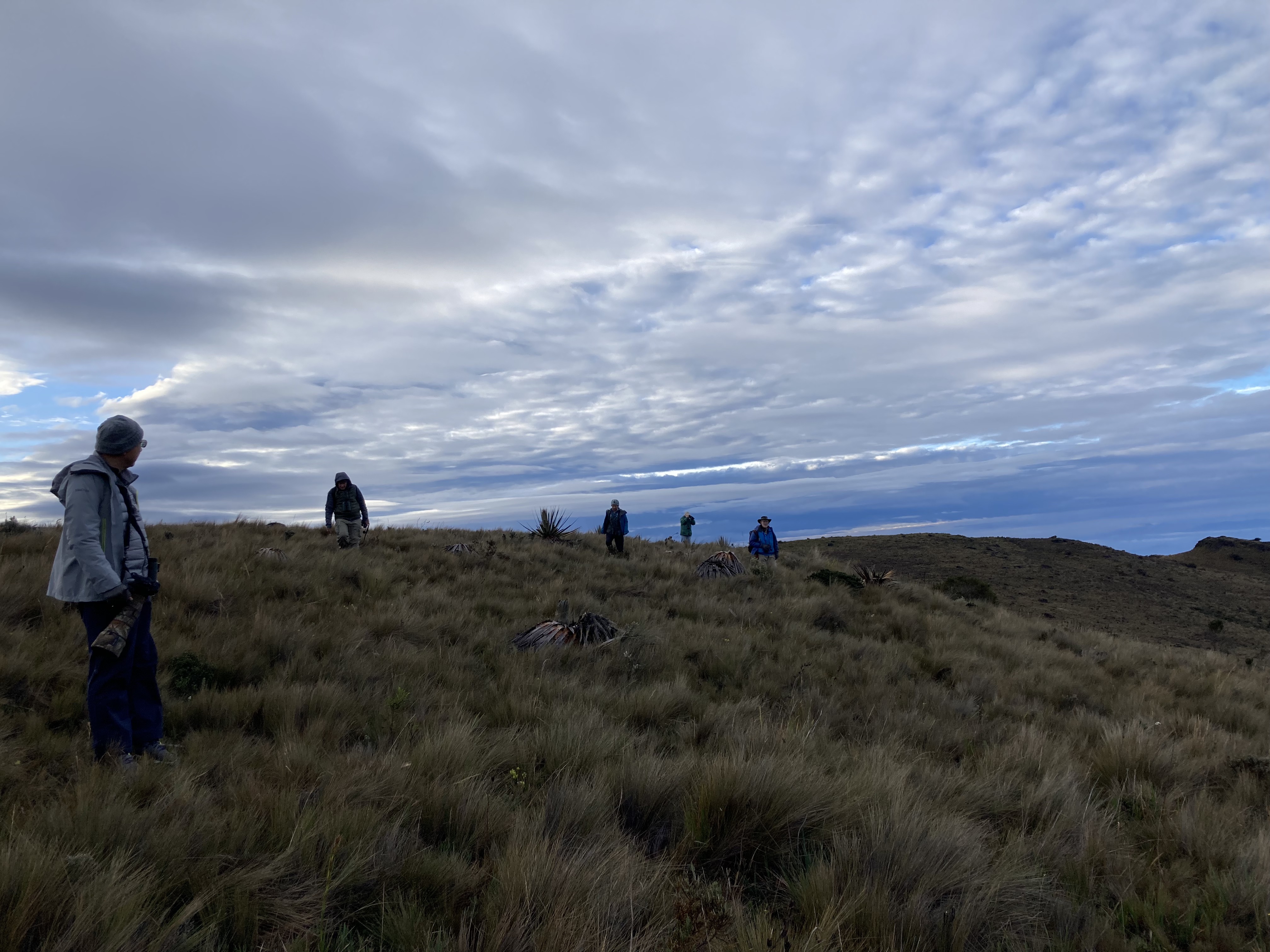
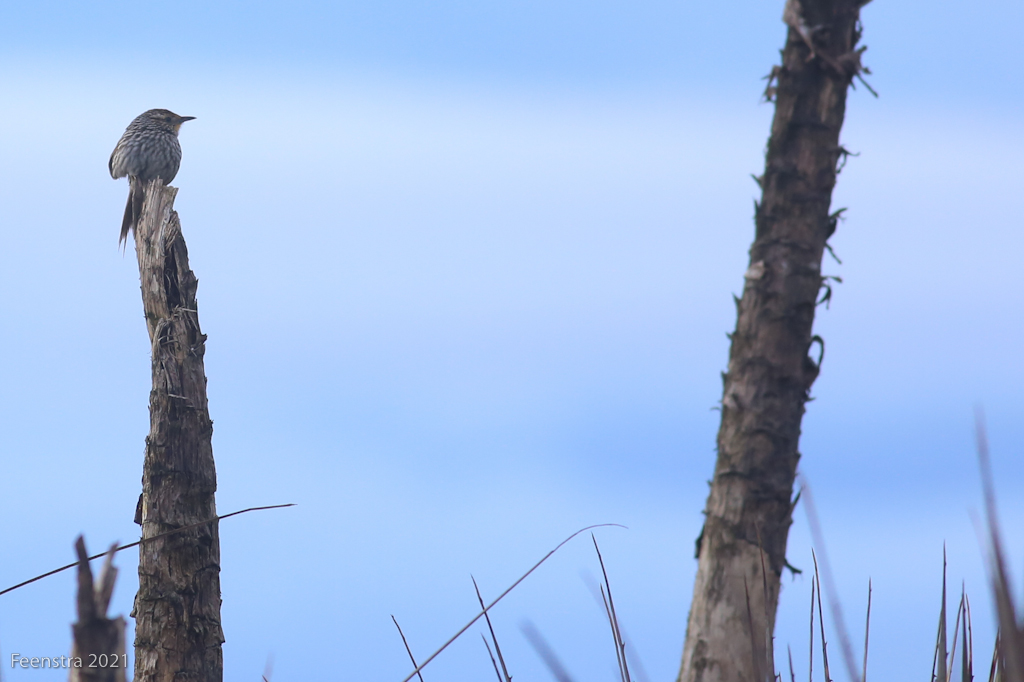
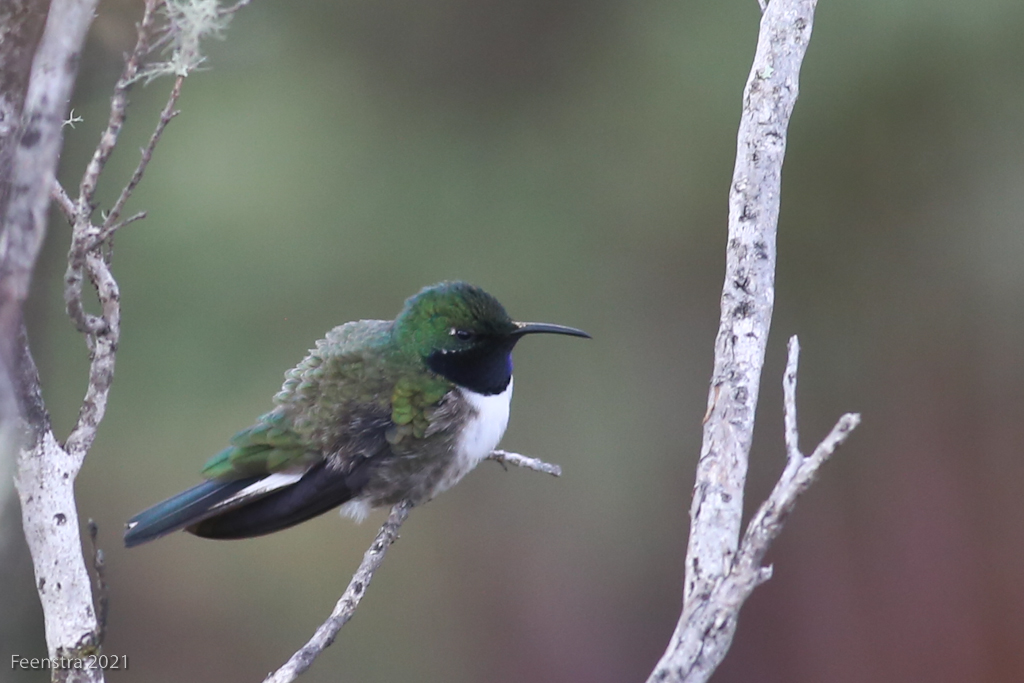
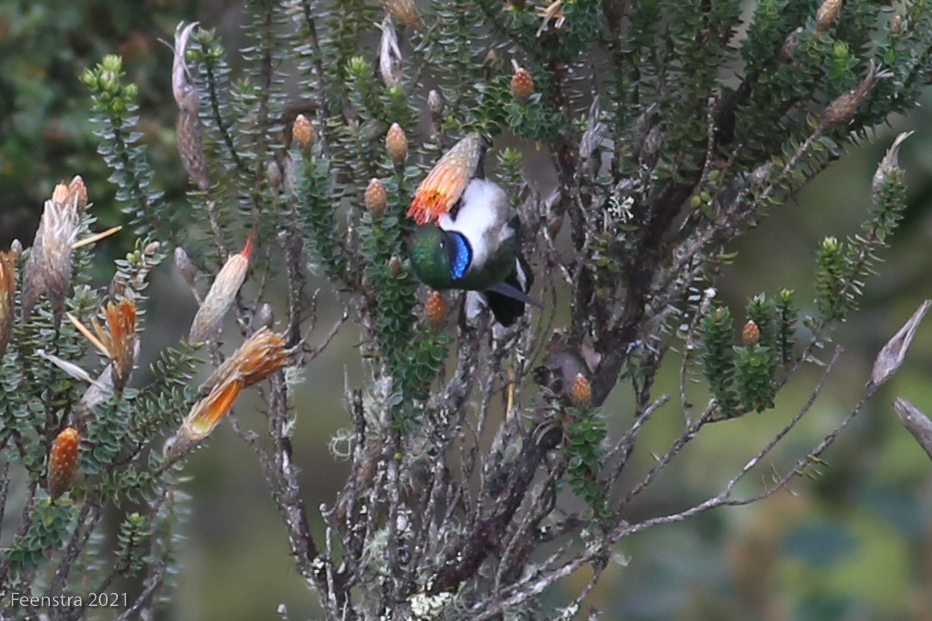

We did the next morning in the bracing cold with the Blue-throated Hillstar. This morning he was very active, hanging upside down on the flowers as the stems bowed under his hummingbird weight. But it was time to leave, and begin our descent. The long bumpy road didn’t have too much decent birding habitat, but somehow we bumped into a few Turquoise Jays just hopping around in a tree on the side of the road. We broke for a picnic lunch and some more birding in some high elevation cloud forest and found a couple of nice flocks, including one where everyone seemed to be looking in different directions at different birds. A Scarlet-bellied Mountain-Tanager here, a Spectacled Redstart there, a White-crested Elaenia in between, and a Glowing Puffleg buzzing about. The rain ended the fun and we used the birding-unfriendly weather to finish our drive, ending at low altitude and Amazonian foothill rainforest of Copalinga Lodge.
We started our Amazonian forest birding along the Rio Bombuscaro in Podocarpus National Park. Forest birding is both a thrilling and frustration experience as birds move through the canopy or through the understory, and sometimes in good light. A lot of birds get away, but a lot don’t, and we saw some flashy things like Paradise Tanagers, Golden Tanagers, and Green-and-gold Tanagers. But, the stars were the big cotingas. First there were the two Andean Cocks-of-the-rock at the lodge while we were eating breakfast, then there were the two or three more we saw eating berries along the trail in the park. Then there were the Amazonian Umbrellabirds. First we saw one perched up in the bare branches of a tree, then we saw another right over the trail. We also could hear the fog-horn call of another one somewhere. All before lunch. Lunch was memorable because a troop of White-fronted Capuchins showed up and stole all the bananas from the feeder behind the lodge. We ticked off a few more tanagers in the afternoon, then did the afternoon hike up into the forest for Gray Tinamou. Not too hard since one has become accustomed to eating cracked corn in the trail. In fact, this time it was two, and three White-throated Quail-Doves, too. We had dinner and finished birding for the day with a Band-bellied Owl off the back porch.
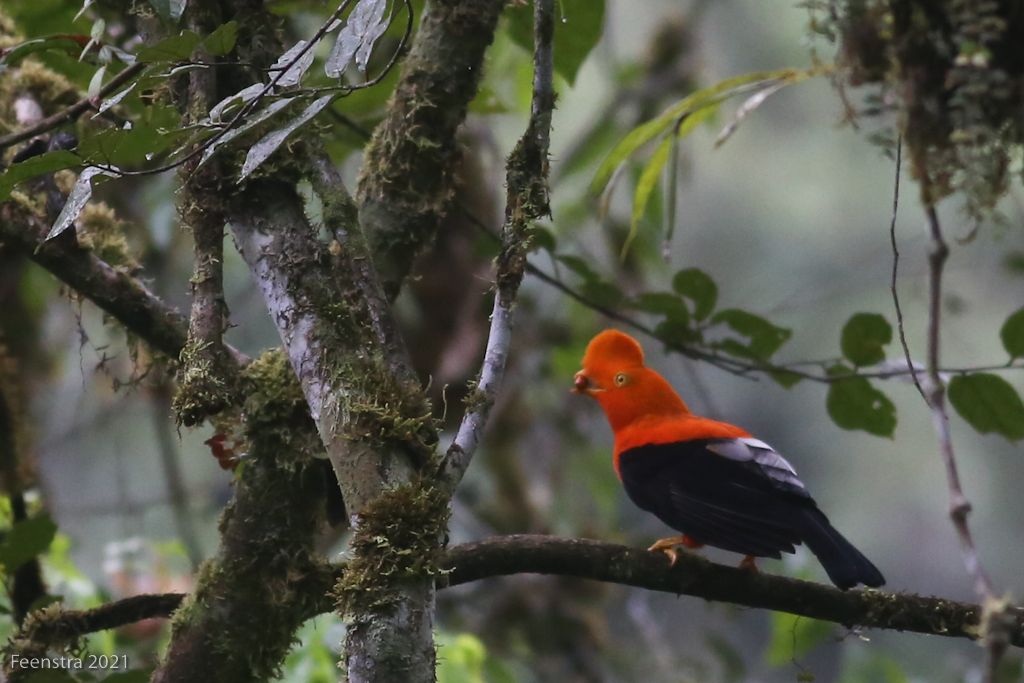
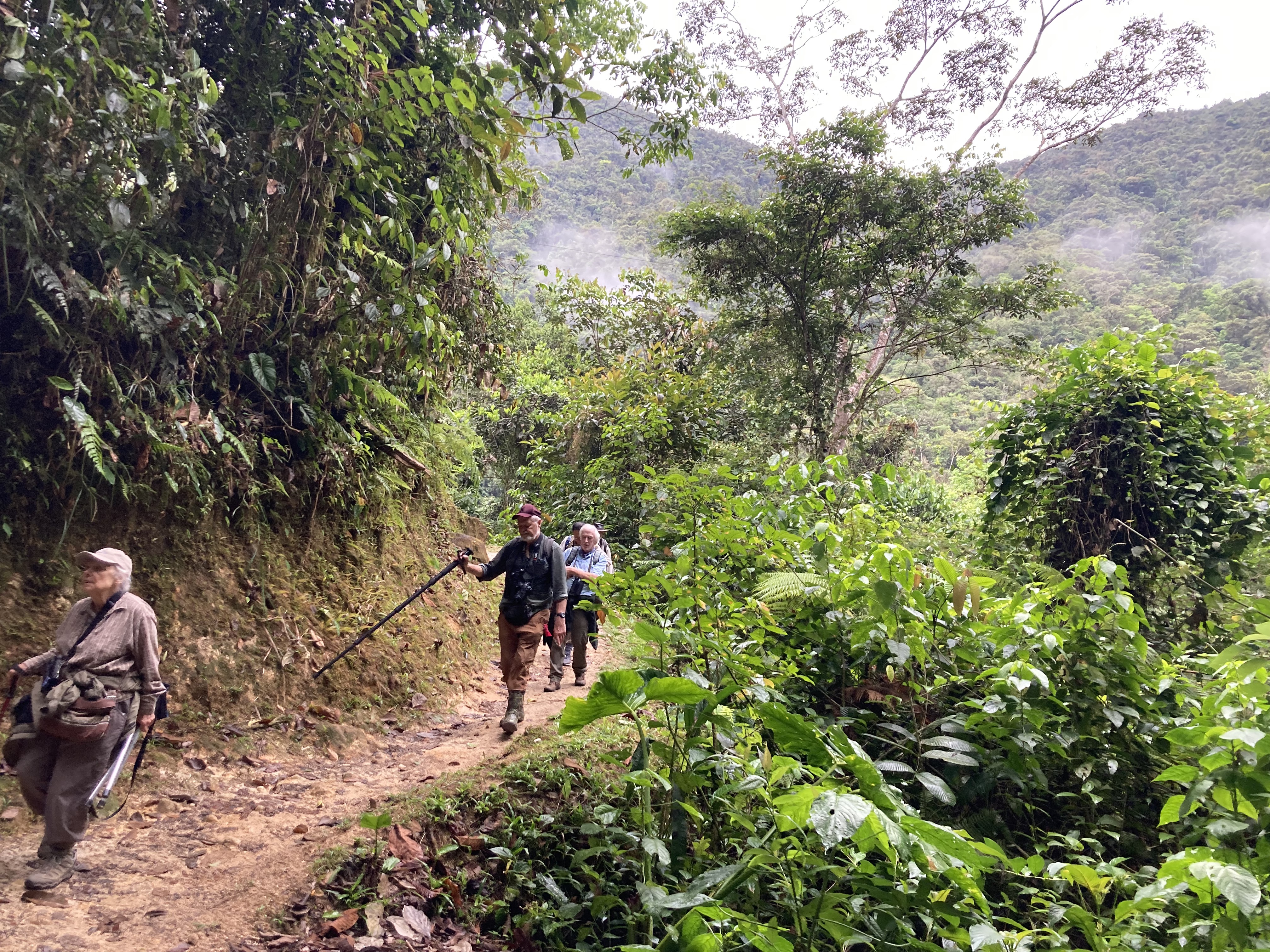
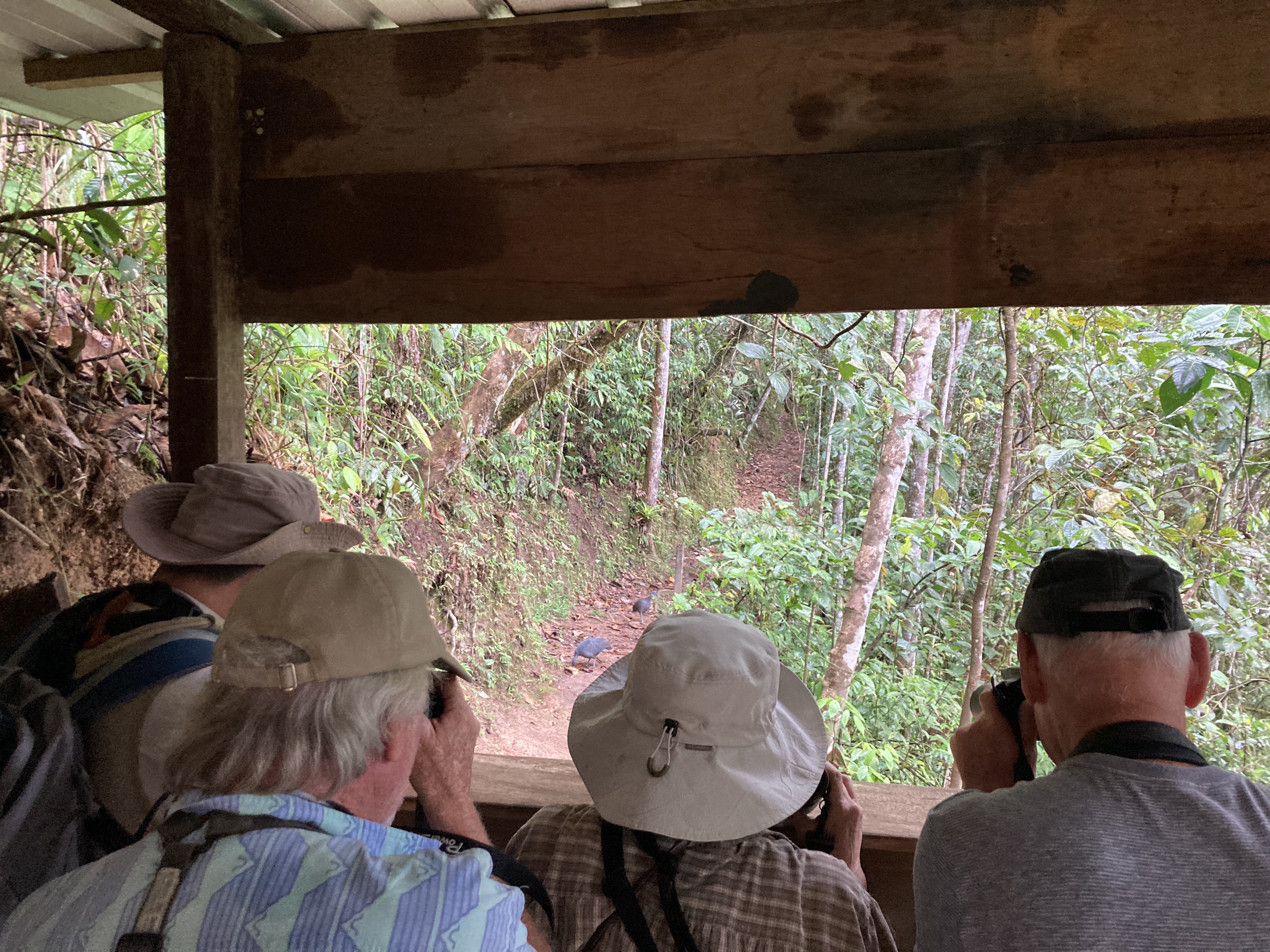
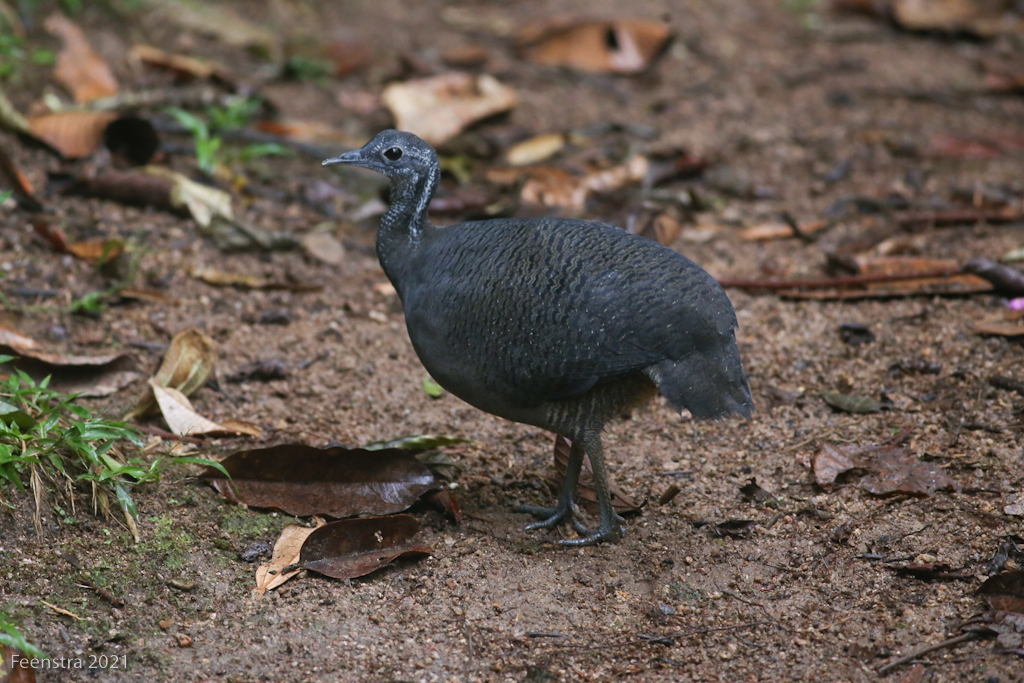
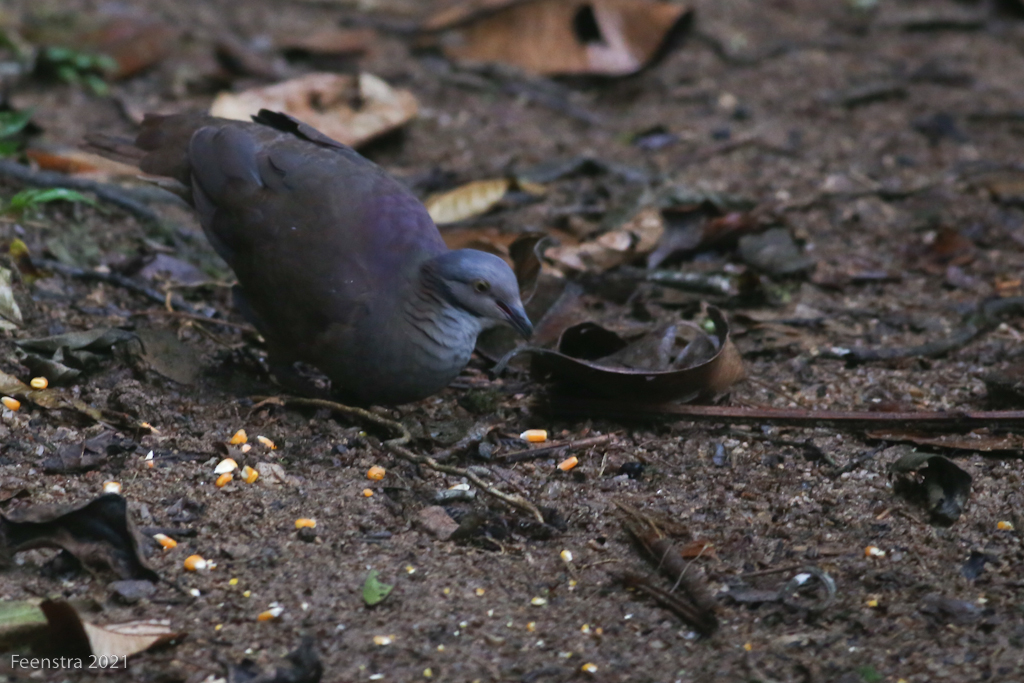
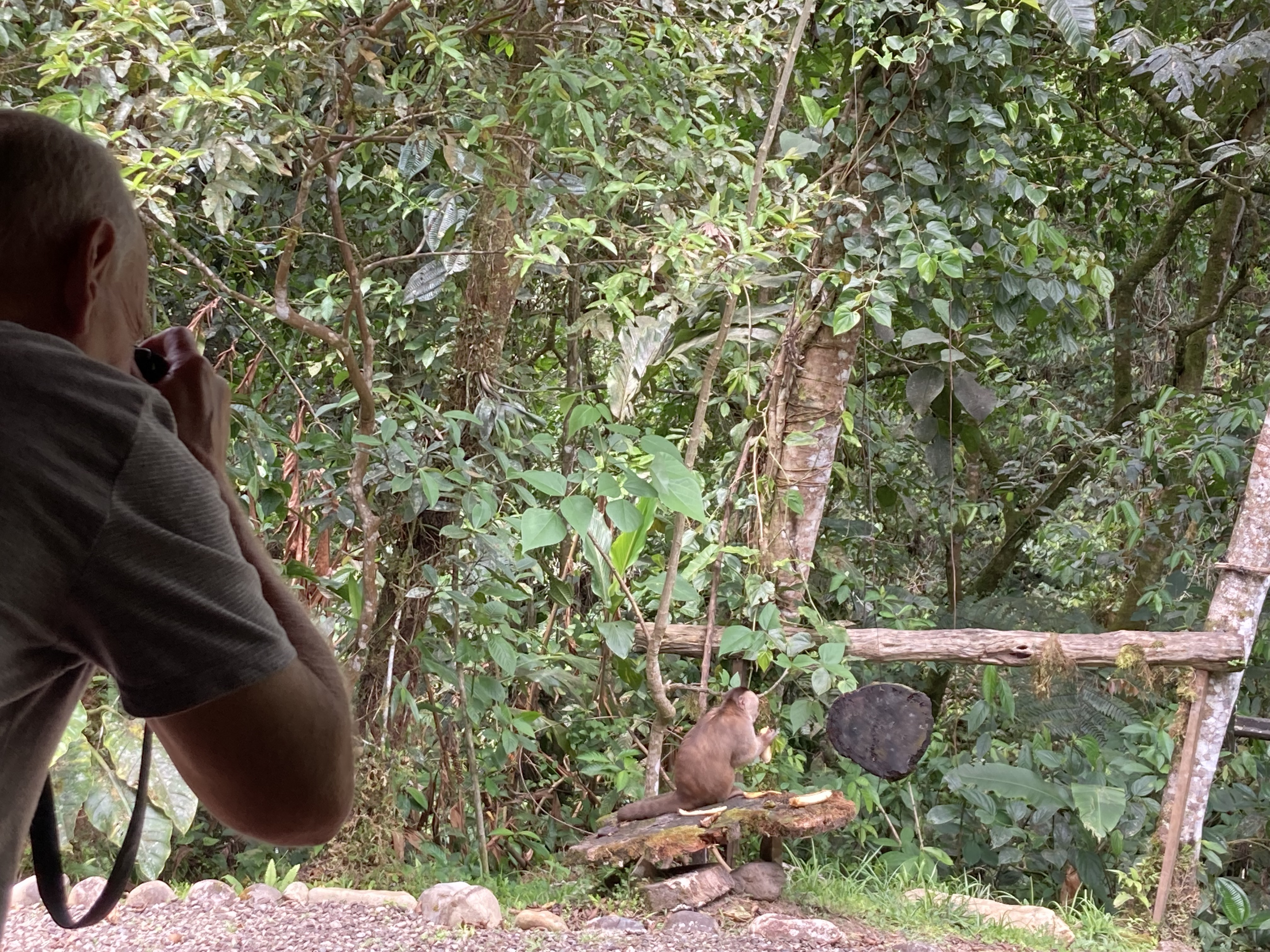

When highways are built in Ecuador, they often leave behind an “old road” that runs parallel, but is the same old dirt track that it was back in the day. This morning we started on the old road up from Zamora. It was peaceful with little traffic and a few nice flocks of birds. Not in a flock, but something that came through for us (as much as something like this could come through) was a Black-billed Treehunter on the roadside, then across the road, then across the road again. Back at the lodge while packing up we happened into a Little Woodstar feeding in the flowers out front. We had heard that it had been seen recently, so not a total surprise, but it was nice to see it floating there. After another great meal and ice cream, we departed for parts southeast in the Nangaritza Valley, stopping along the way for birding. At one location while watching the treetops for Turquoise Tanagers and Masked Tityras we saw a snappy Yellow-bellied Dacnis. A woodcreeper that snuck into a hole kept us vigilant, but never re-emerged for identification before the rain started and we moved on toward our lodge. Another stop had us scratching our heads over an infrequently-seen just-left-nest juvenile plumage of Plumebous Kite.

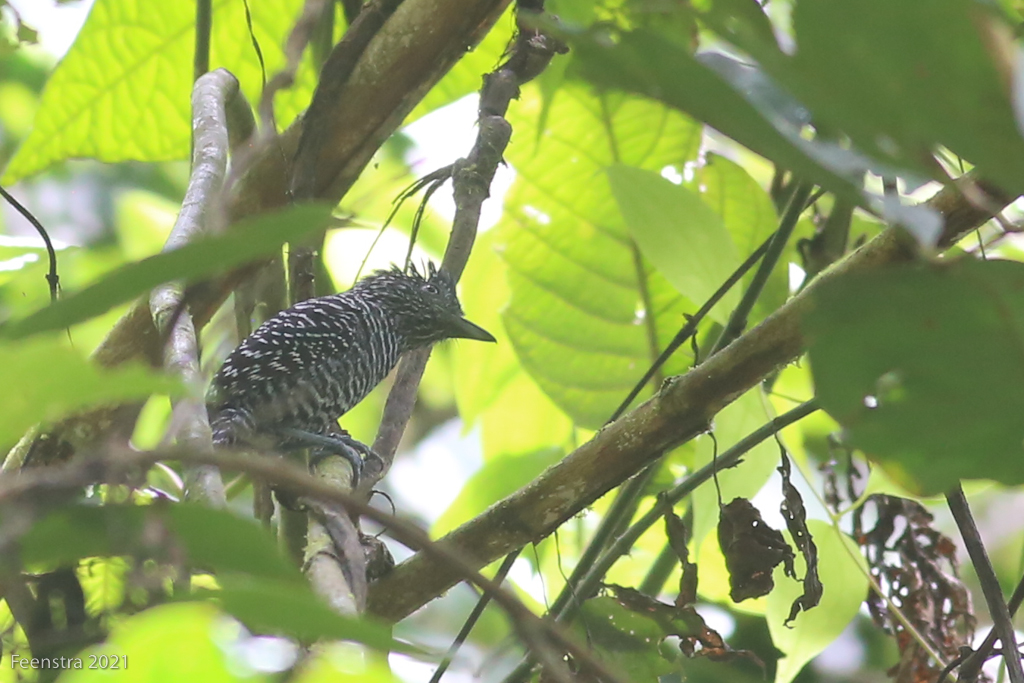
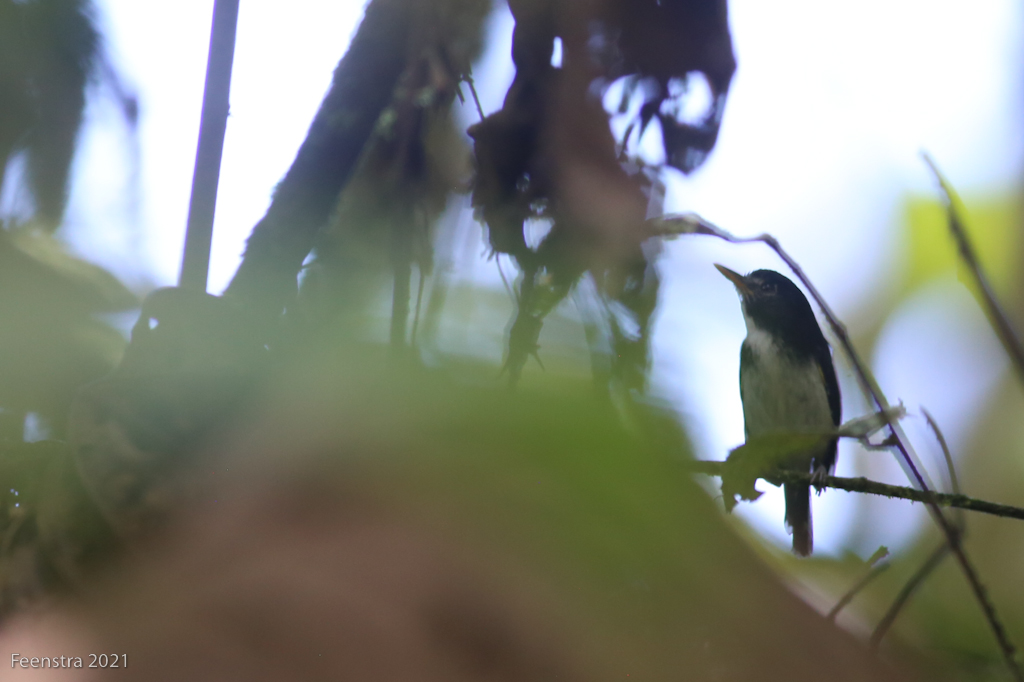
At this point we had made it to the remote forests of the Cordillera del Condor, truly the birding frontier in Ecuador, and the area is home to some special birds at the limits of their ranges. Lowland Amazon birds come up a little higher in elevation here and join more typical foothill species. The flock of three Purplish Jacamars and the two White-browed Purpletufts on the side of the road are examples of this (as well as being super cool-looking). An Amethyst Woodstar on the flowers just outside of our rooms was another one, but, like many woodstars, generally enigmatic, so a true honor. Working the forest, we encountered a few good flocks and worked harder when we would heard a deep denizen that we wanted to see. That generally worked out pretty well and we got to see both big Fasciated Antshrikes and tiny Foothill Stipplethroats and even tinier Black-and-white Tody-Flycatchers. We ended the day watching the skies for swifts. There weren’t many, but a Short-tailed Swift that flew in and dropped down into a palm snag for the night was a remarkable observation.
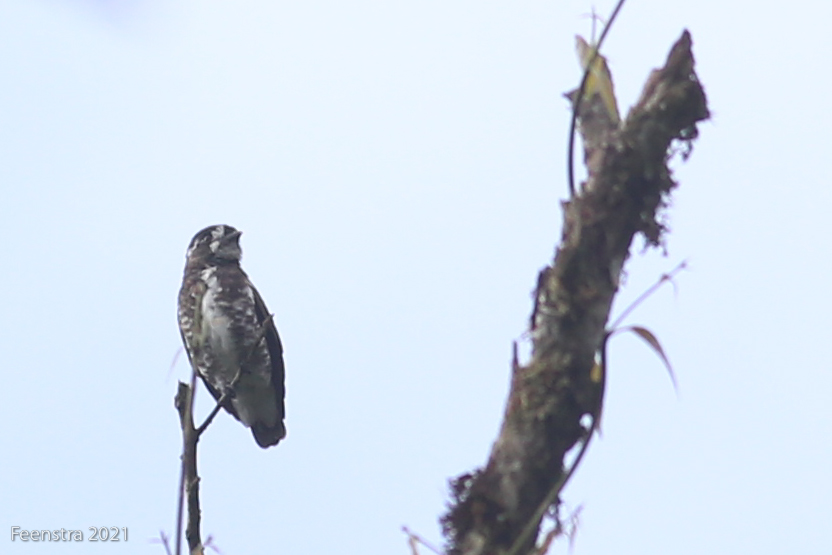
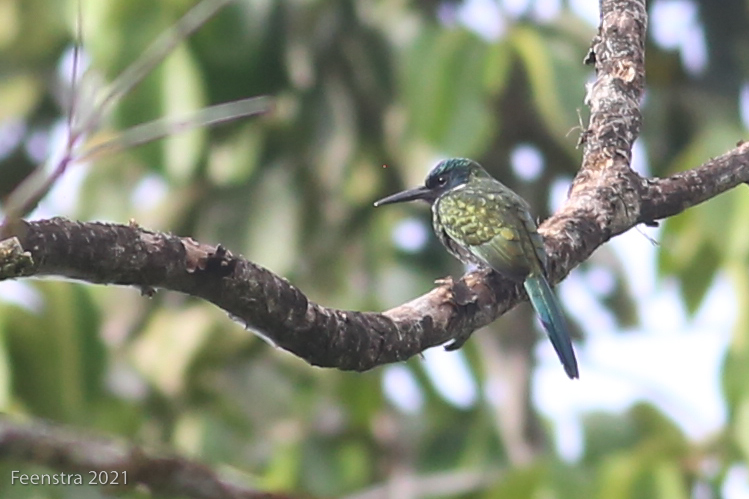
Our final day in the low Amazonian foothills was a good one. After much effort, we connected with an Orange-throated Tanager. Though foggy, it was perched up and singing, and its glowing orange throat shone through. We also expanded this southern Ecuador tour into Peru where a small stretch of the road goes across the unmarked border. The Peruvian side is very remote and it’s unlikely that anyone in Peru even knows that this road exists, but it’s a fun way to bird and tick off a few species in another country. We had a good flock with a variety of tanagers, two species of trogons, and some flycatchers. Good stuff, and made even better by this cross-border bird observation smuggling. Then it was time to leave the low country and make for the high again. On our way west and up we stopped at a stream crossing and found a few Torrent Ducks, a Torrent Tyrannulet, and a White-capped Dipper, all of the whitewater birds in one spot.
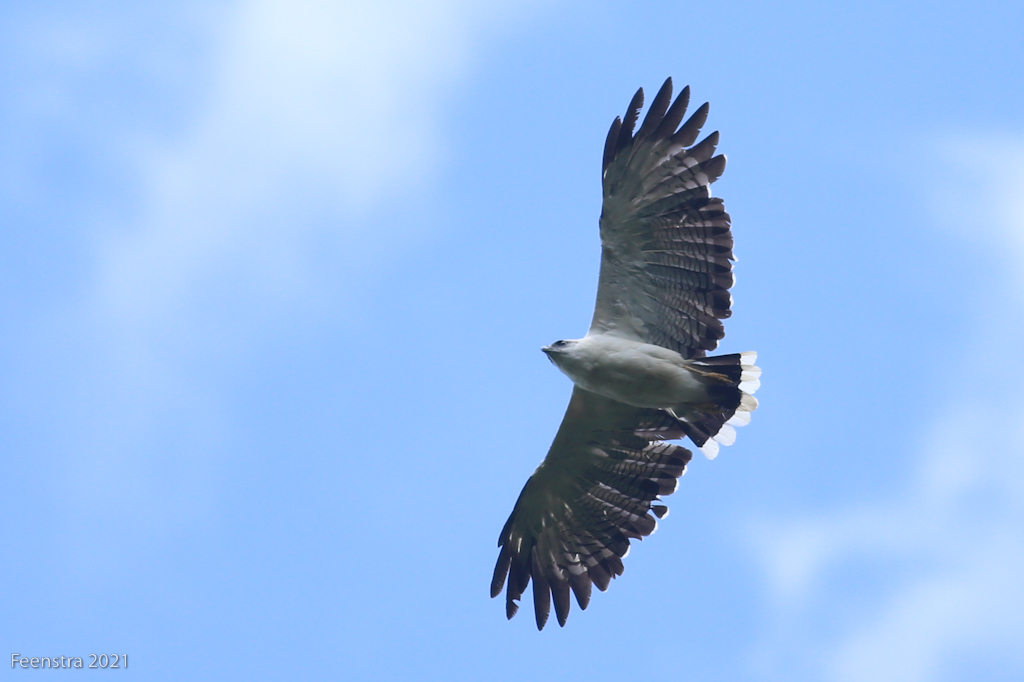
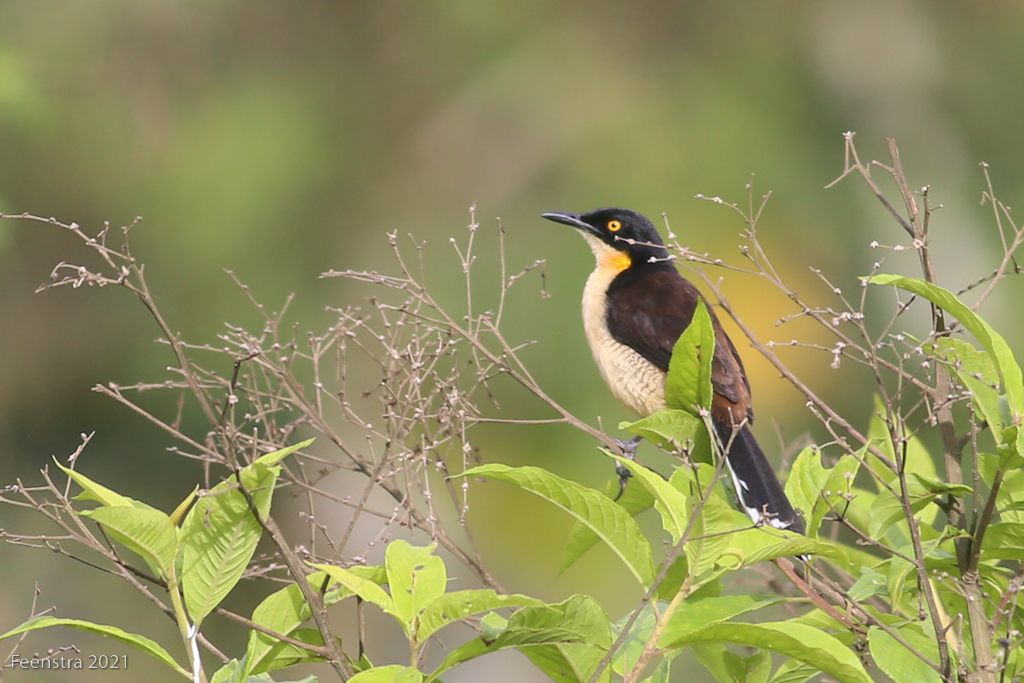
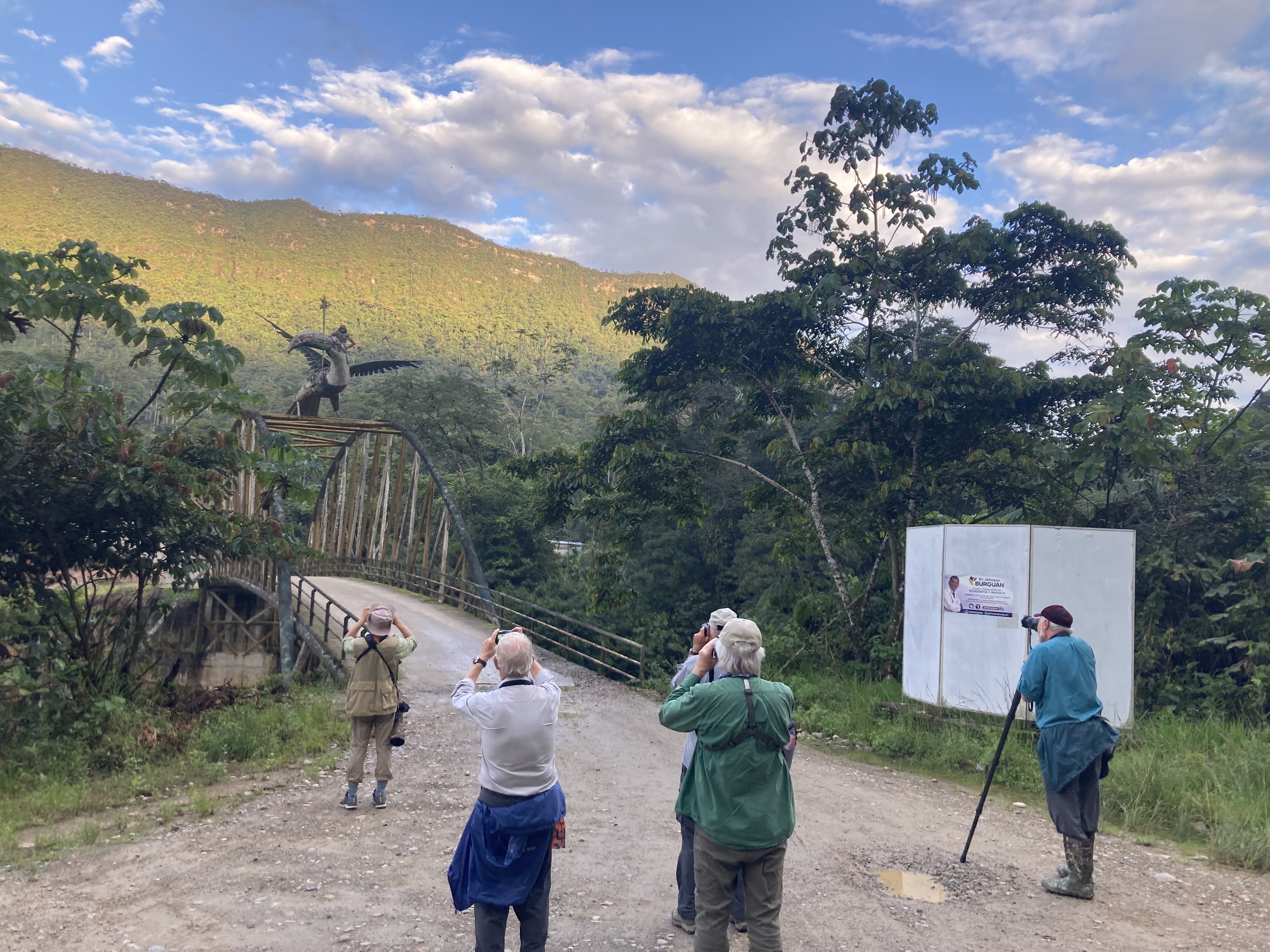
Back in the cool highlands outside of Loja we were reunited with alpine birds. The flocks at the upper part of Podocarpus National Park had a different flare with outrageous-looking things like Grass-green Tanager, Barred Fruiteaters, and well-named Pearled Treerunners. We also encountered new hummingbirds like Little and Amethyst-throated Sunangels. Little was once called Flame-throated, and watching one turn its head in the sun truly showed that meaning. The day started cool, and turned quite sunny – good soaring weather, and we were treated to a Black-and-chestnut Eagle sailing and circling over us. We left the high country, dipped down into lower, drier country, then back into the high country of Reserva Tapichalaca.
Reserva Tapichalaca is special among the Jocotoco reserves in that it carries the standard of the organization. Within its forests is the homeland of the Jocotoco Antpitta in all its big, strange glory. It was quite the muddy slog, but we got to the spot and got to see two of these spectacular antpittas. Once was taking food back to a nest off in the forest somewhere. The rest of the morning couldn’t compete. The afternoon, however, was great, too, though without the star power. While preparing to leave the lodge for lower elevations we were waylaid by a flock that included Citrine Warblers, Pearled Treerunners, Barred Becards, and Lacrimose Mountain-Tanagers.Then, when we got to those lower elevations, we hardly looked for birds at all. We found a fruiting tree that everything seemed to be coming to on its own. We stood on the side of the road and watched as the birds came to us. There were Paradise Tanagers, and Golden-eared Tanagers, Silvery Tanagers, Blue-naped Chlorophonias, and Maranon Thrushes. All of the things that we had intended to look for. It was glorious.
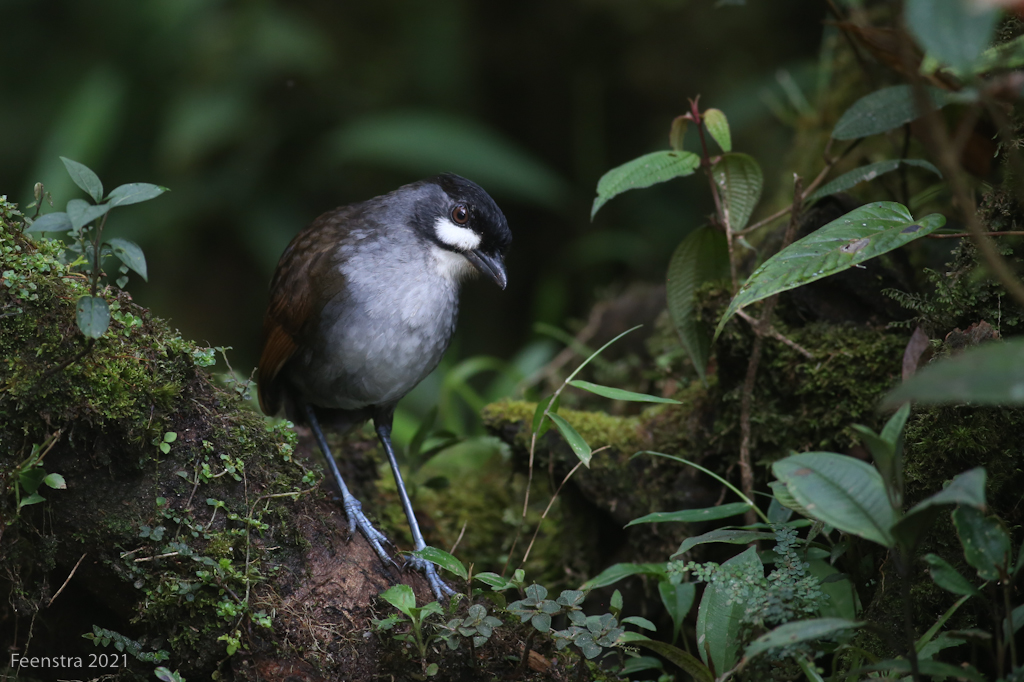
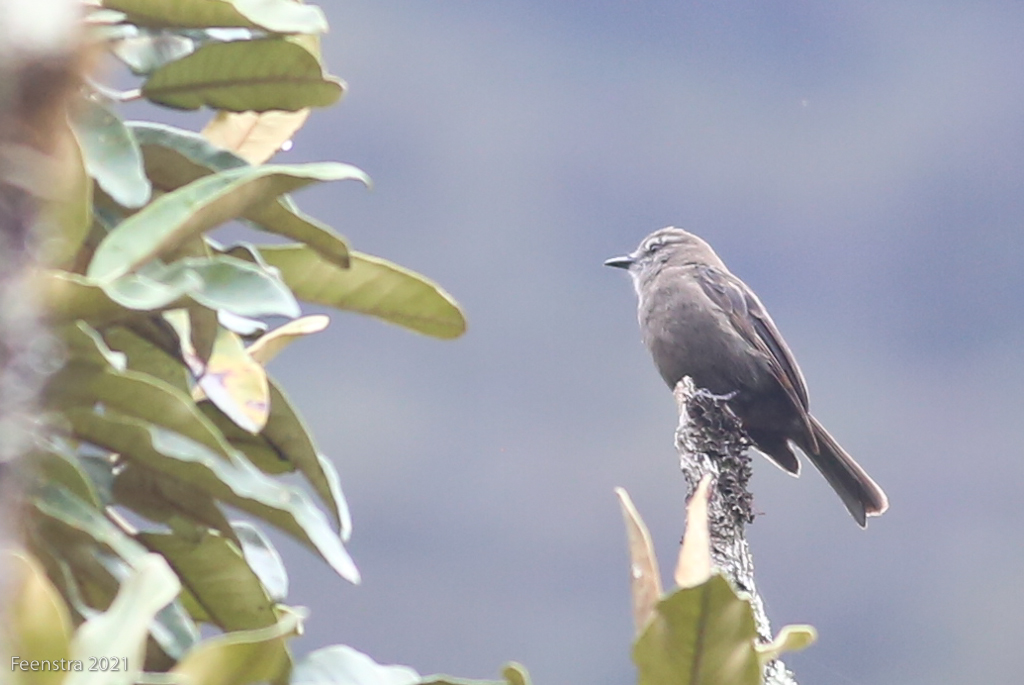
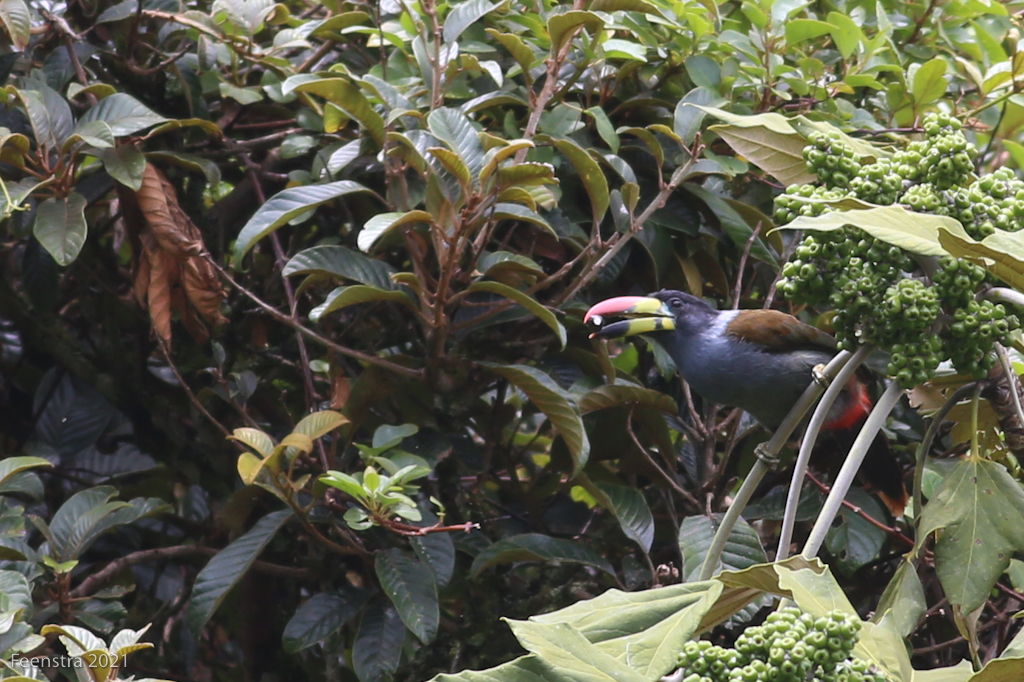
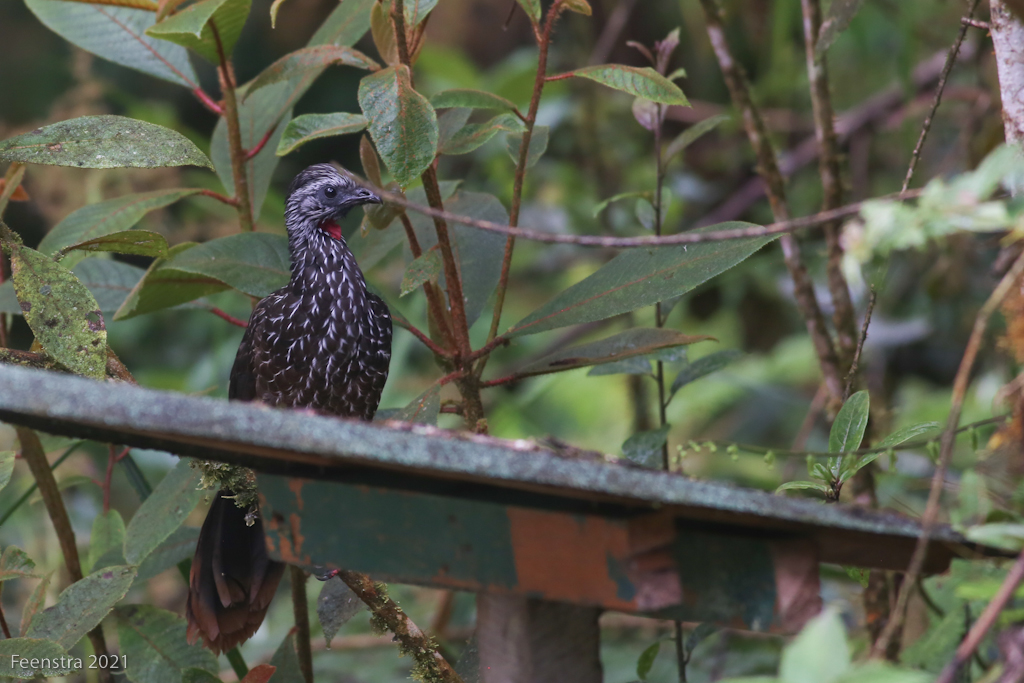
Leaving the cloud forest for the last time, we began our time in the dry country, starting outside of Catamayo in the thornscrub, now surprisingly lush after some recent rains. Some birds eluded us (its name will not be uttered), but others were seen exceptionally well, like Plumbeous-backed Thrush, one of our first birds out of the vehicle. A juvenile Band-tailed Sierra-Finch was an interesting plumage, not illustrated, and a subtle version of its adult form. From there we wound up and down and up again to Jocotoco’s Reserva Utuana, a tiny piece of extant stunted highland forest. There were a few things in the forest, but the hummingbird feeders were really hopping with explosive Rainbow Starfrontlets and Purple-throated Sunangels, and the understated Speckled Hummingbird. From there it was down, down, down to the lodge in the Jorupe Reserve. Suitcases hadn’t even been taken from the van and we were captivated by White-tailed Jays at the bird feeder. Quite a start!
The fruit and corn in the garden were a scene in the morning with squabbling Rufous-headed Chachalacas, the aforementioned White-tailed Jays, Whooping Motmots, Ecuadorian and Plumbeous-backed Thrushes, and dozens of Blue Ground-Doves all crashing together for breakfast. We walked the forest after that on the road through the reserve. Among other things, we found a fruiting plant (incidentally, a nettle that had nasty rash-inducing hairs) attracting Saffron Siskins and White-edged and Yellow-tailed Orioles. The forest got hot, sunny, and quiet pretty quickly, so we took the time for casual exploring – good thing, too, because we found a shady thicket and a leaky pipe and it got us point-blank looks at a Watkin’s Antpitta as it went about its antpitta business. We just sat in the shade for 20 minutes, no played recordings necessary, and let nature come to us. Perhaps one of the highlights of the whole trip.
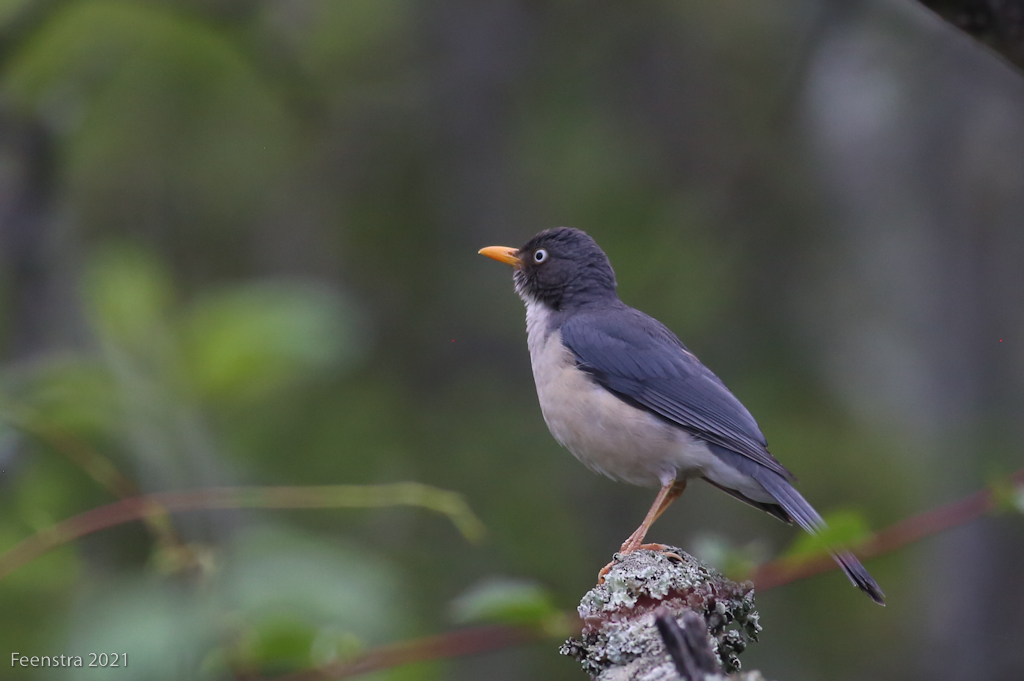
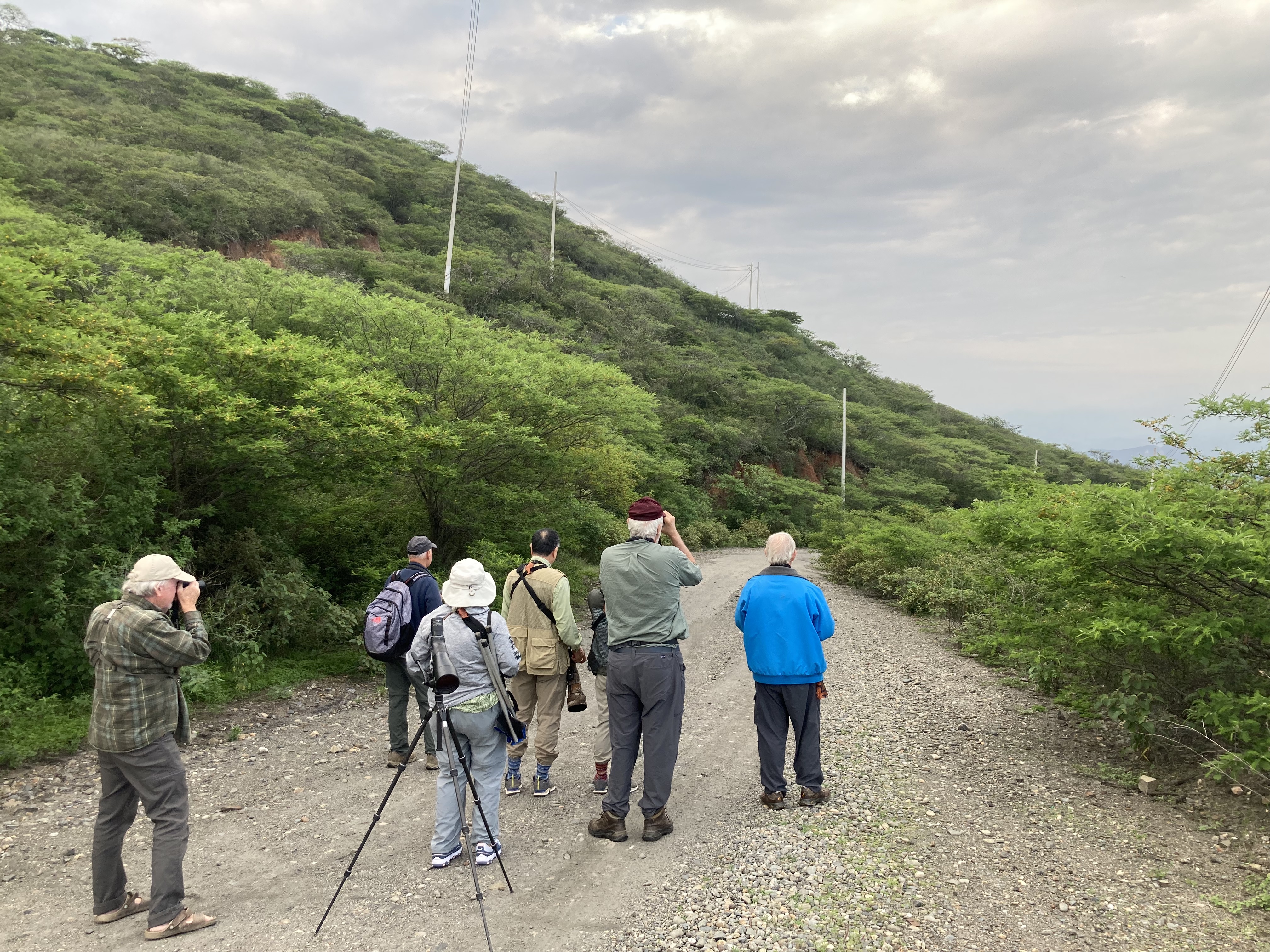
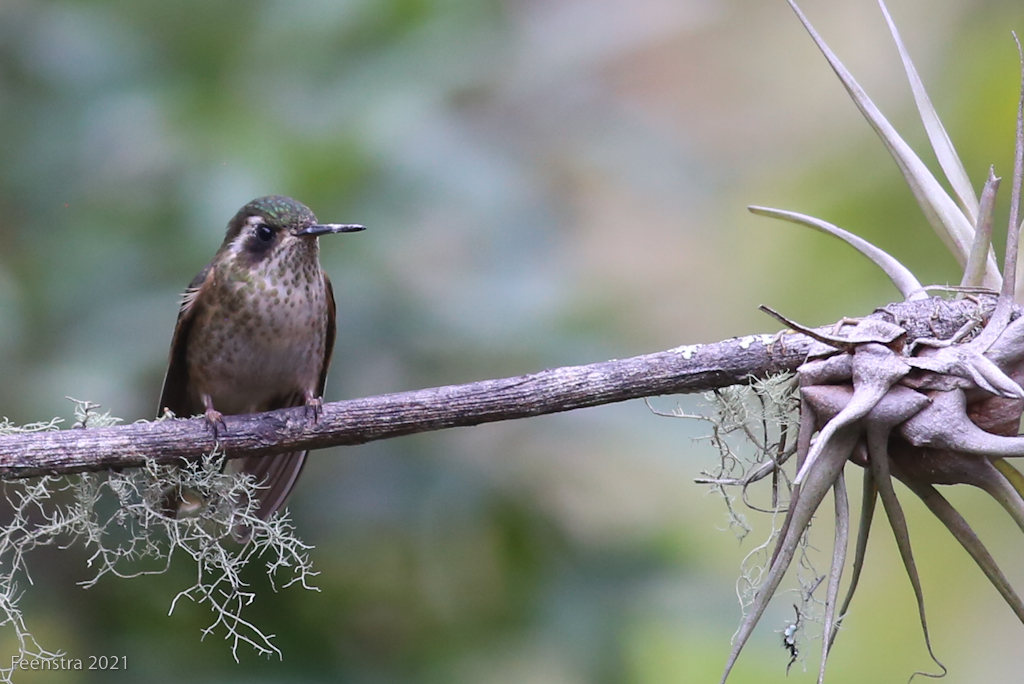
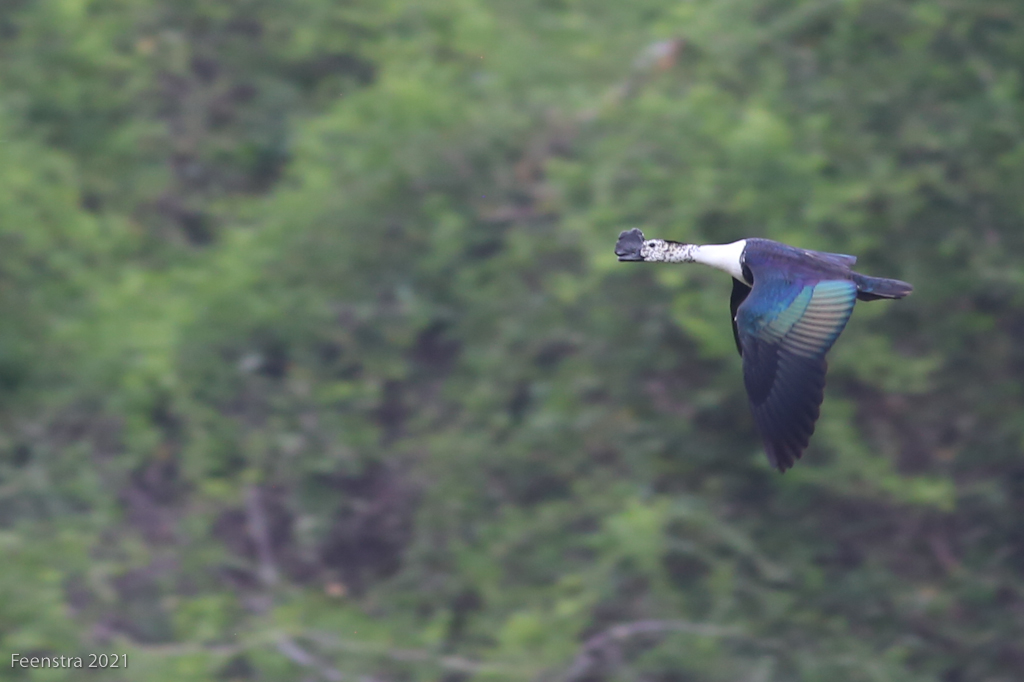
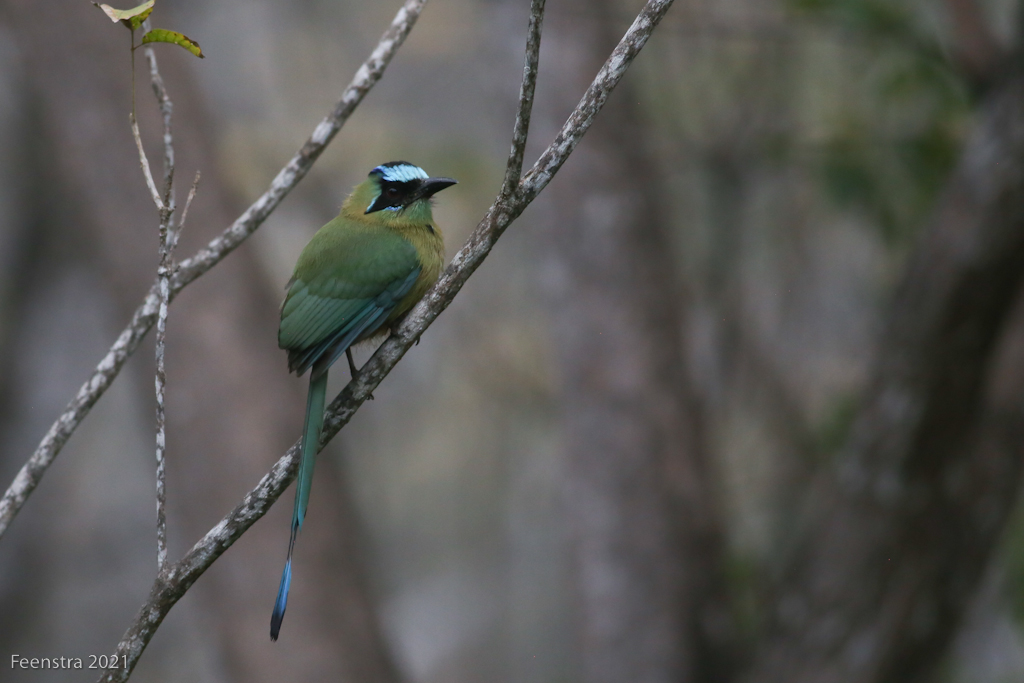
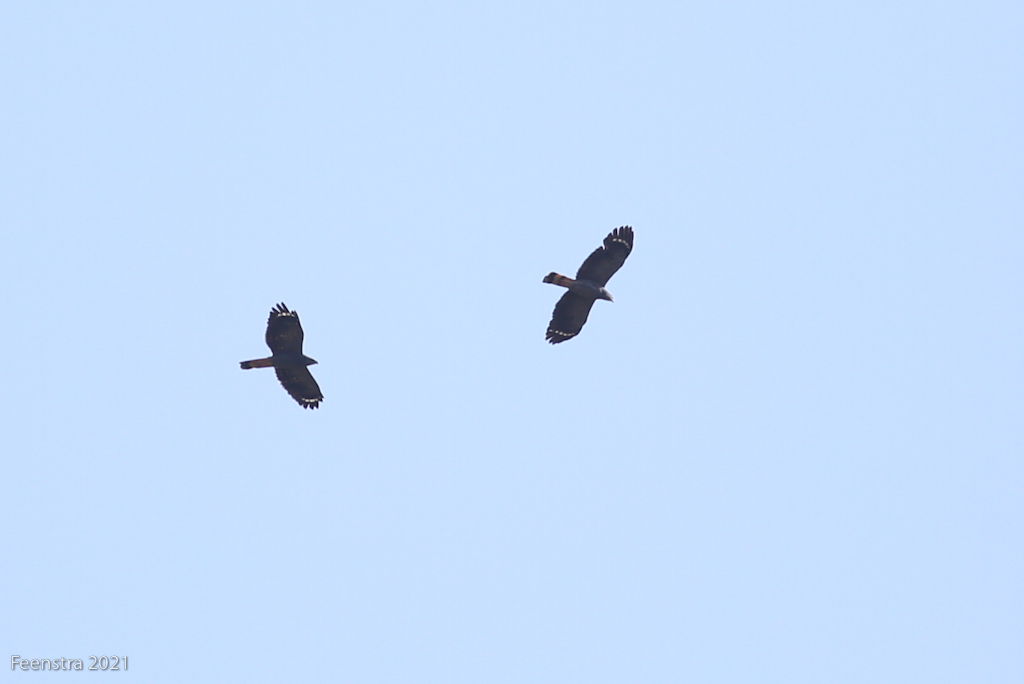
The deciduous forest part of the tour ended on a high note which kept going into our transition to western rainforest. After encores with the Pale-browed Tinamou and Watkin’s Antpitta we were treated to a show of aerial sparring of a trio of Crane Hawks overhead. Leaving the reserve we made a few stops in dry and transitional woodland. It was the heat of mid-day and not too much was going on, but we had a very cooperative White-winged Brushfinch posing at every angle for extended looks. We were still coming up the driveway of Reserva Buenaventura when we found a perched Gray-backed Hawk next to the road, and at the top of the driveway were some of the best hummingbird feeders in Ecuador hosting swarms of feisty hummers. Tiny Green Thorntails and striking Andean Emeralds were shoulder to shoulder with stubby, glowing Violet-bellied Hummingbirds. And, then it was dark with a promise for an interesting tomorrow.
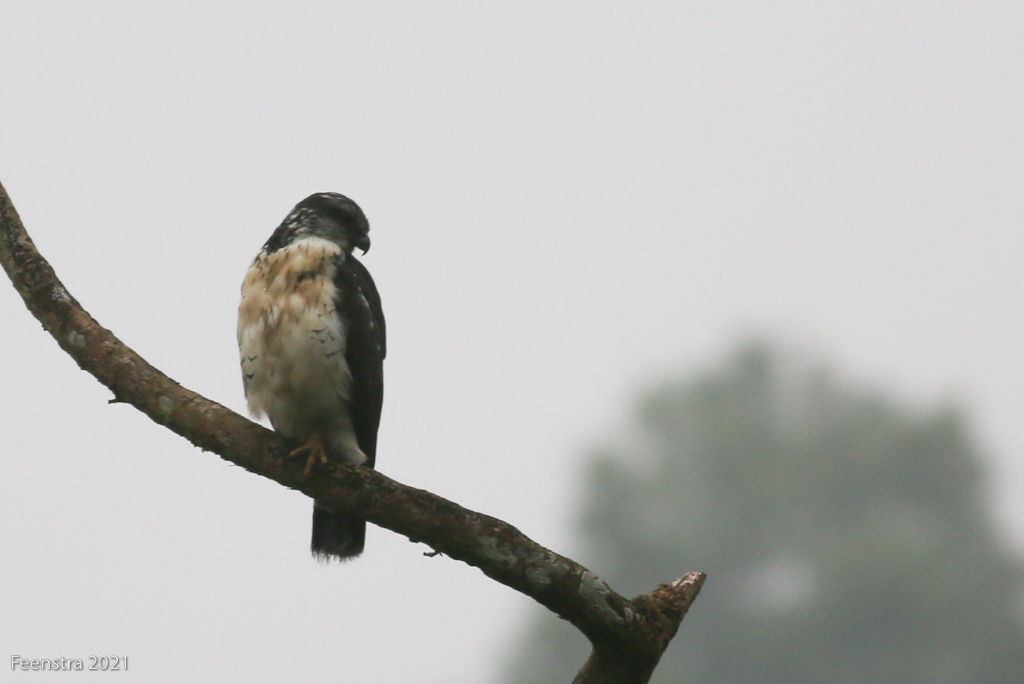
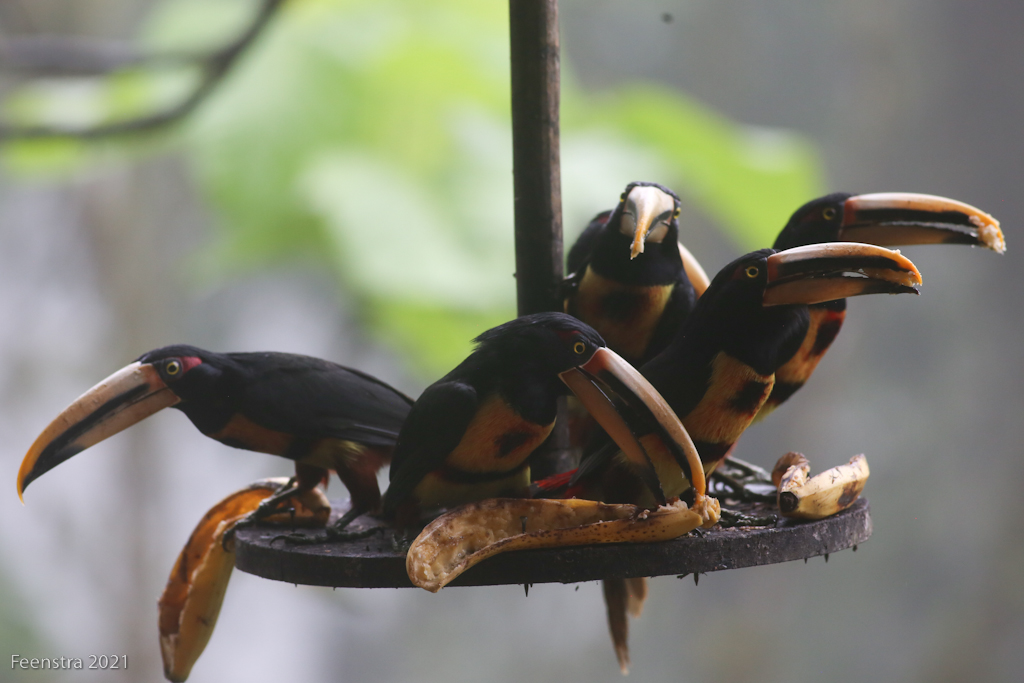
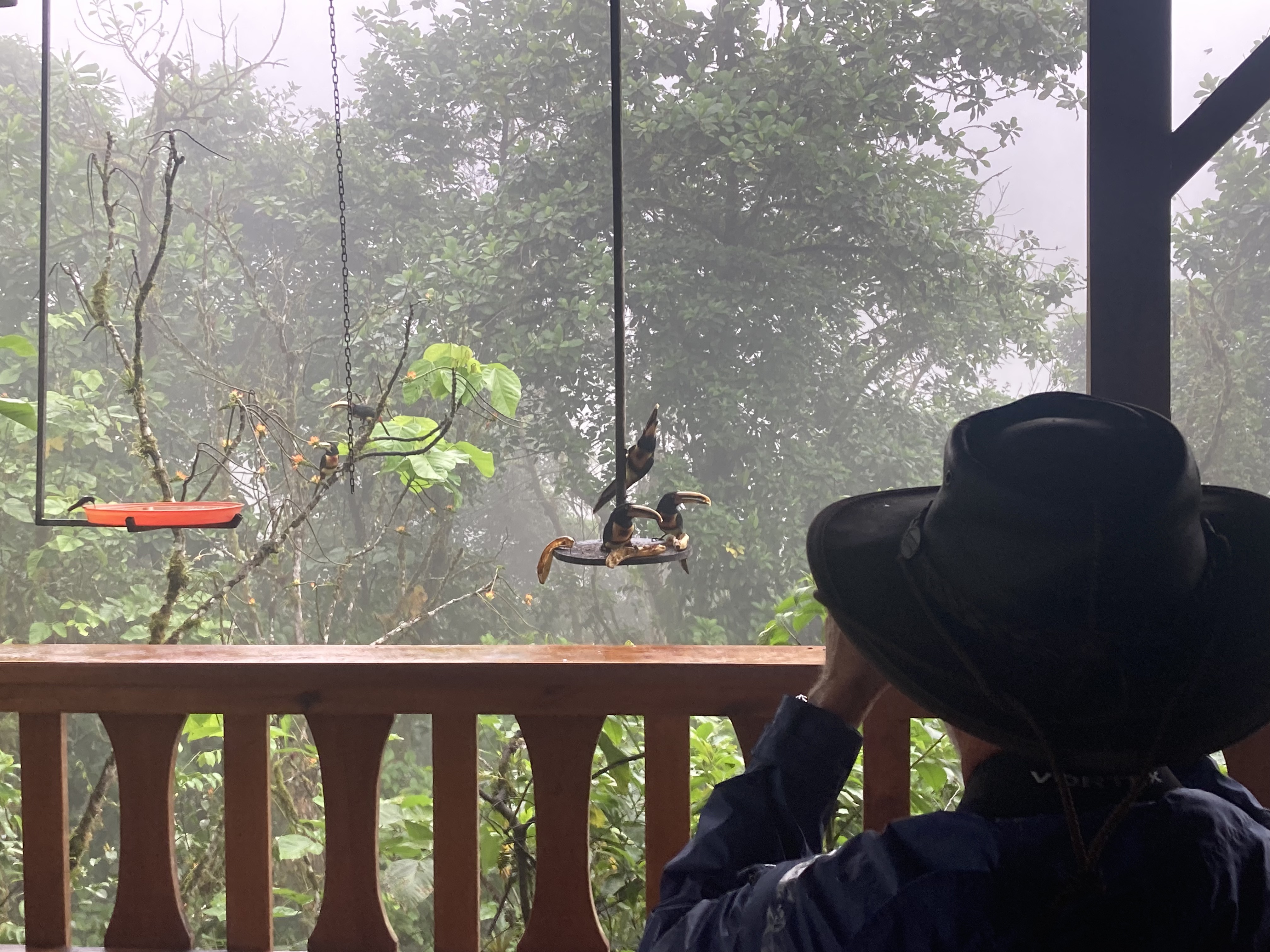
Another day of few lulls ensued. The little lights on the road by the cabins had been on all night, attracted a few moths, which, in turn, attracted a Chestnut-backed Antbird and Black-crowned Antshrike once the sun came up, so that was fun. After that start to the morning we continued our day of birding entirely on foot, no vehicle required. Up from the lodge, while messing with some flocks we found a trio of Song Wrens working across the forest floor like we weren’t even there. They did their thing, flipping over leaves, poking around in the moss, and we watched. We spent the rest of the day quite the same, walking, looking, listening, and finding the residents of this special rainforest. Most notably, at the end of the day, we visited the lek of Long-wattled Umbrellabirds and observed their bizarre bodies and bizarre sounds as they displayed in the canopy overhead. A Black-and-white Owl interrupting dinner later wasn’t a problem.
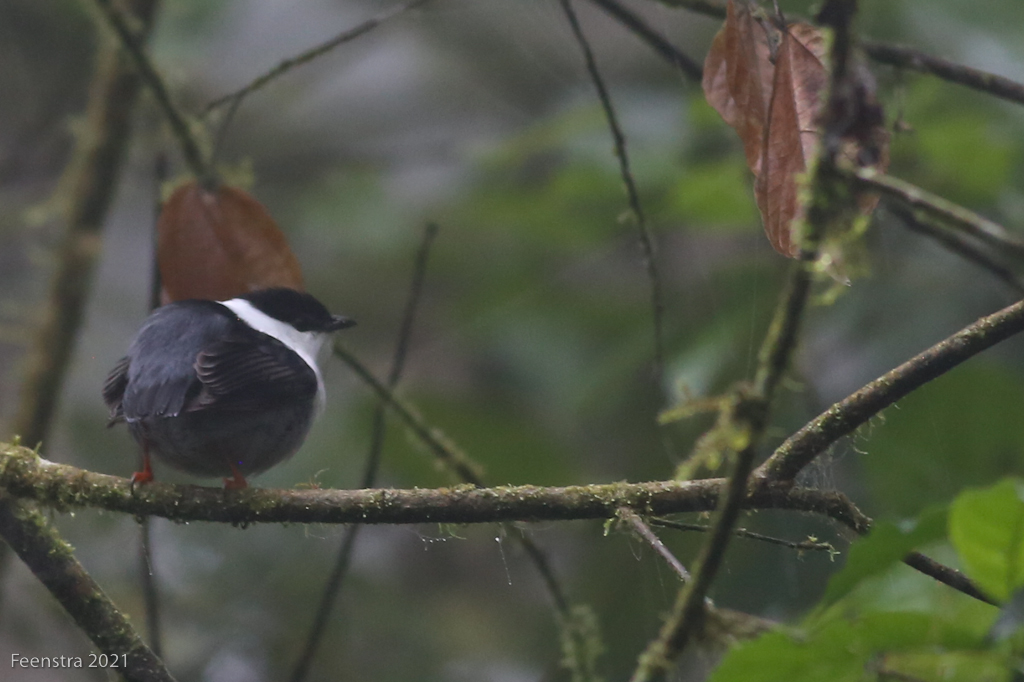
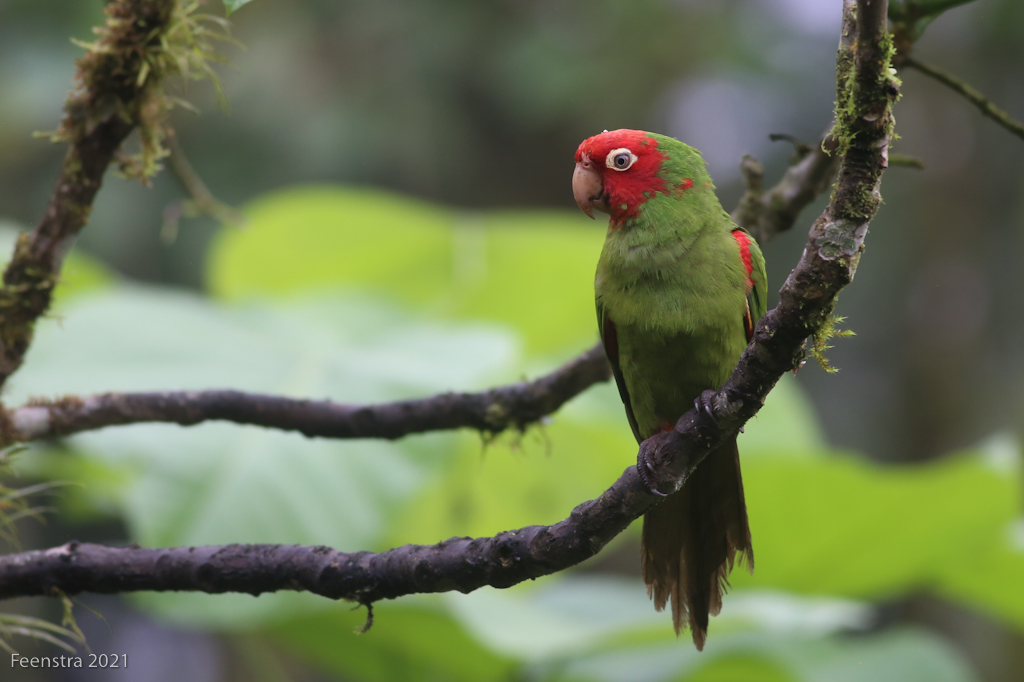
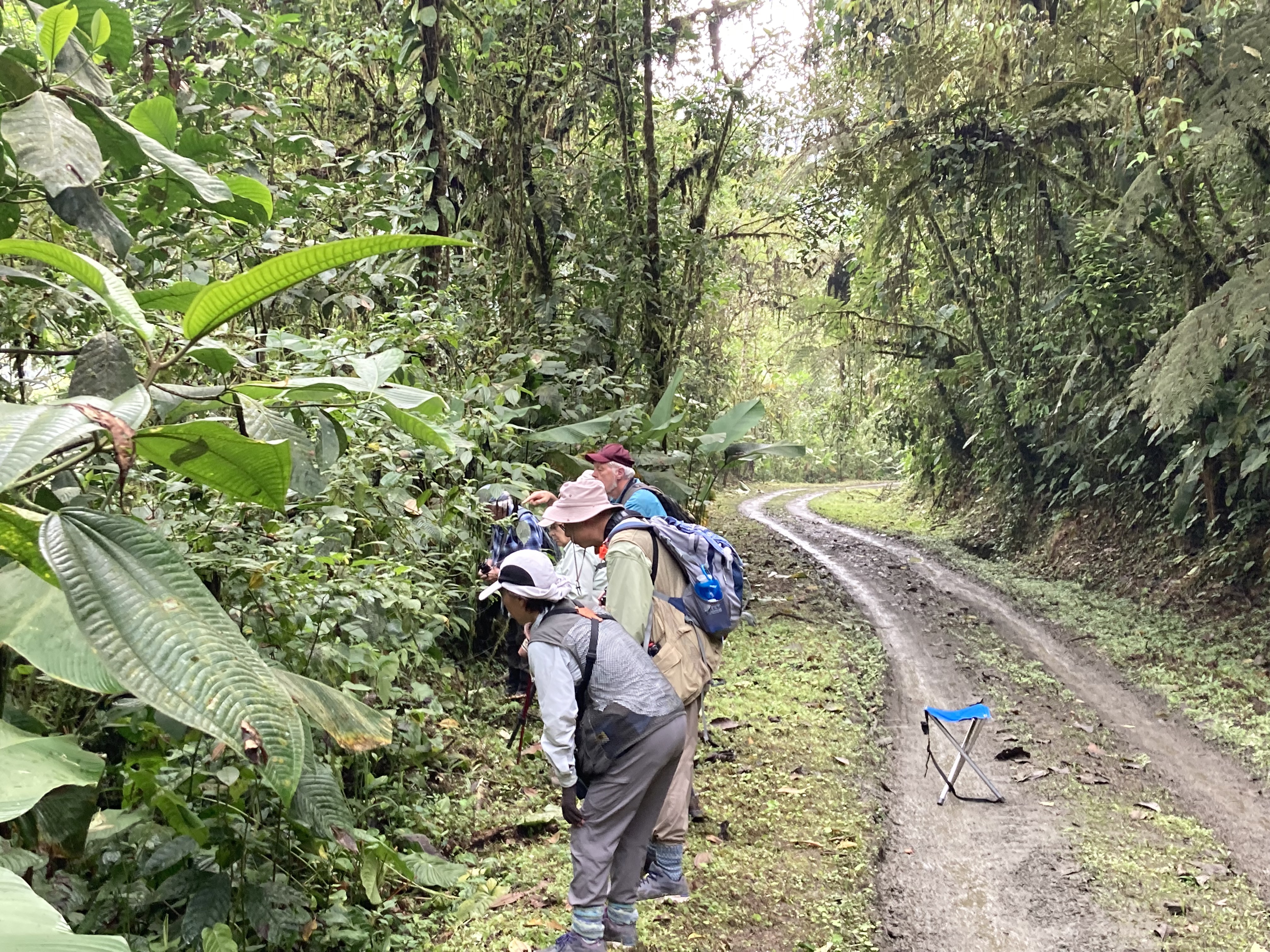
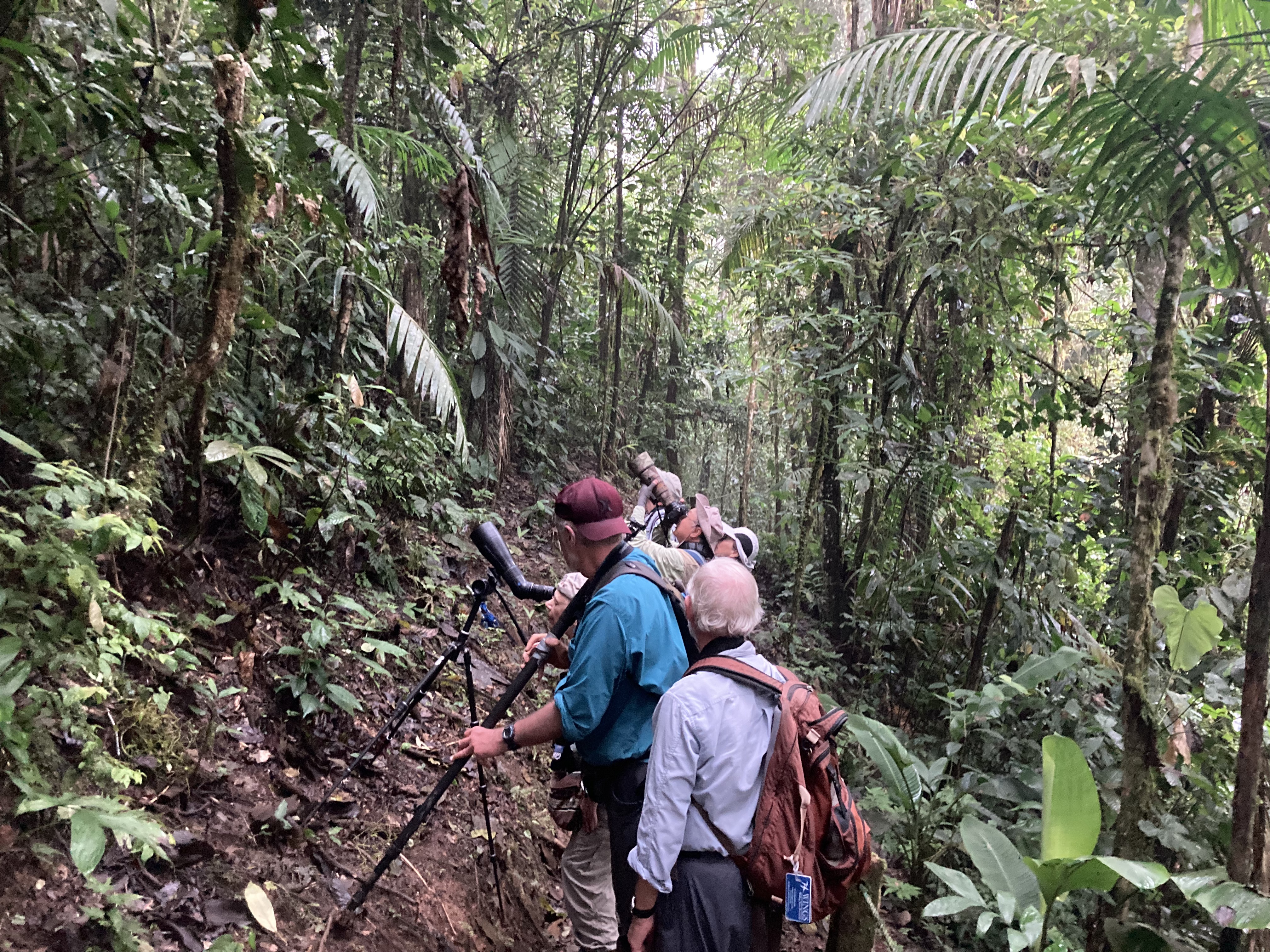
Our final day out was more than just a lot of driving to Guayaquil, it might also have been our single most species rich day: it started in the rainforest and ended at the coast with wetlands and waterbirds. El Oro Parakeets were basically just noises in the fog in the upper part of the reserve, but we were well compensated by a trio of Black-chinned Mountain-Tanagers that came right to us repeatedly. While walking back down the hill we found a male Club-winged Manakin in a fruit tree. After spending so much time looking up at things, looking down onto this bird made the experience even better. The coast lowlands, despite being a lot of banana and cacao plantations, really ballooned our species list. Our last birding stop (though we never really stop birding, right) at a wetland near Guayaquil was swarming with birds. There were Horned Screamers to fill out the big and weird end of things, Black-bellied and Fulvous Whistling-Ducks in the middle, Chestnut-collared Swallows, and Parrot-billed and Chestnut-throated Seedeaters for the small end. Then it was back to the big city hotel to wrap up at great tour.
Feel free to use my photos, send links, or ask me for copies. The link to the tour on the WINGS website is HERE. And, the link to my iNaturalist entries for non-bird wildlife and plants from the tour is HERE.